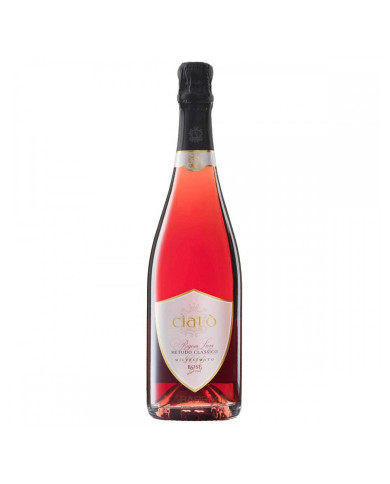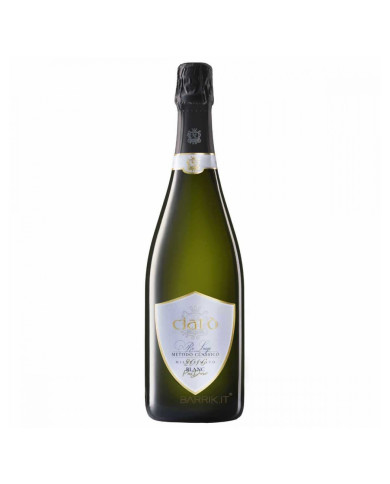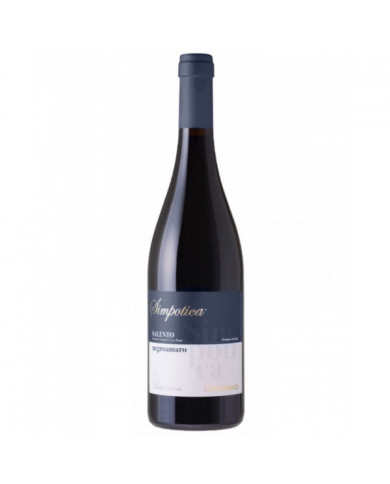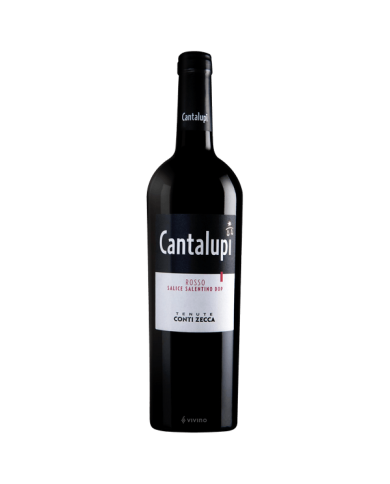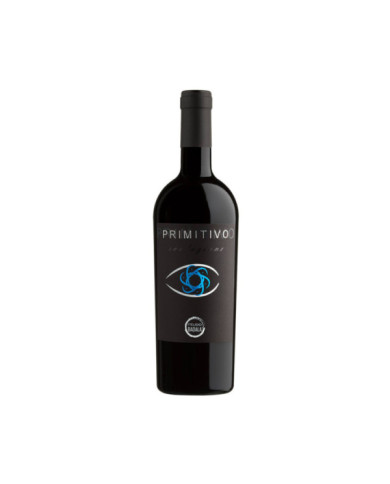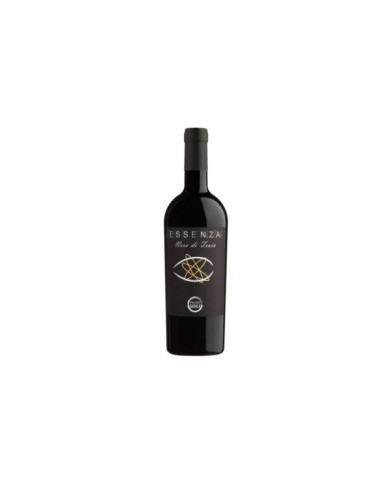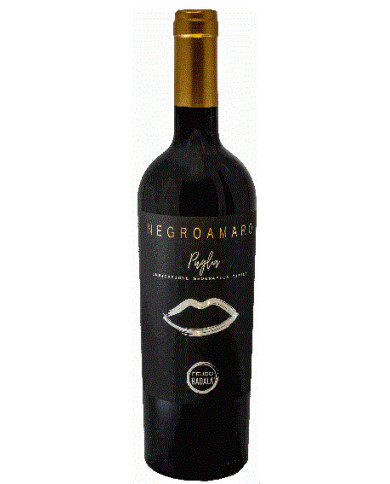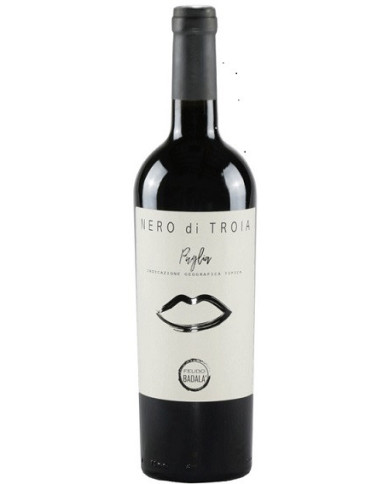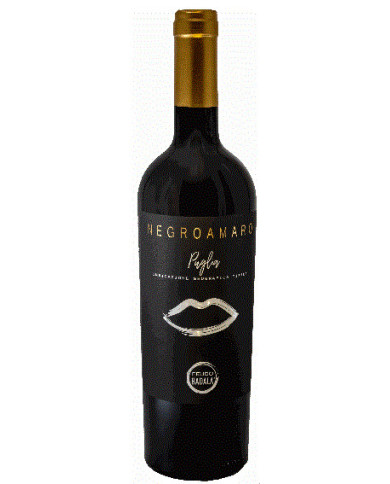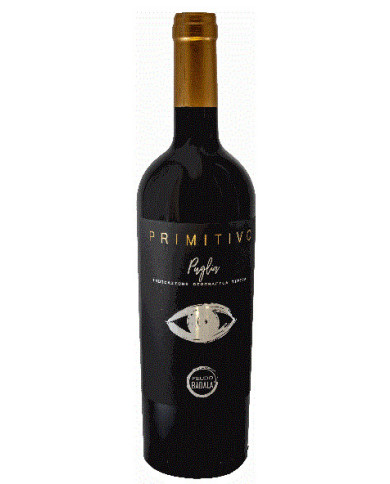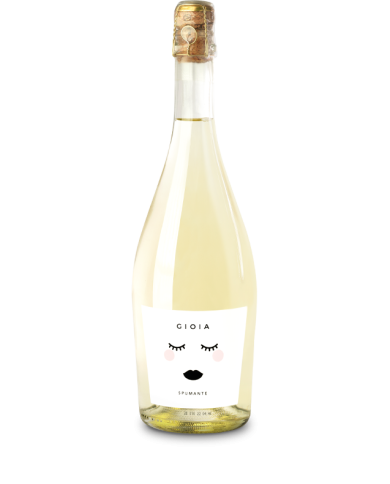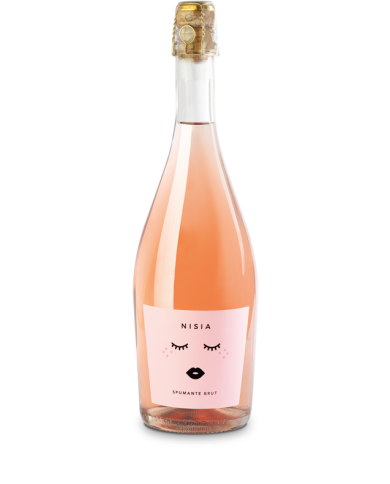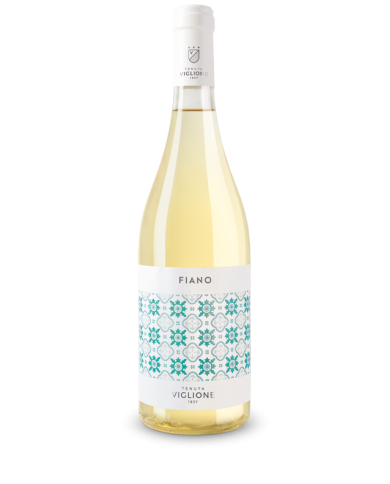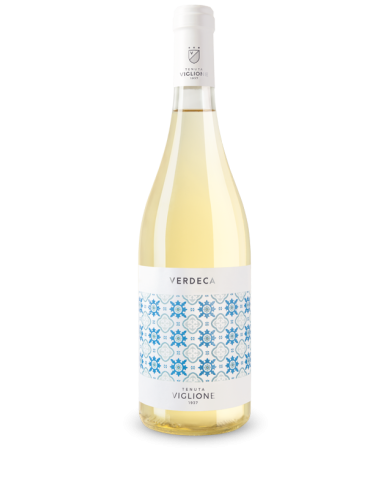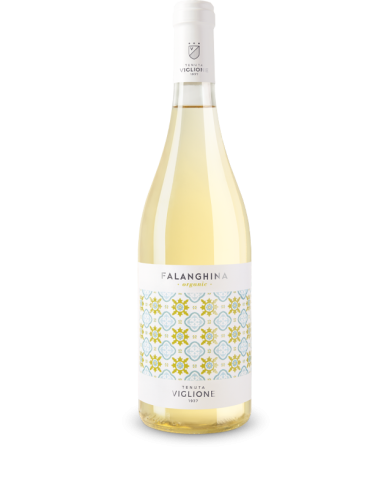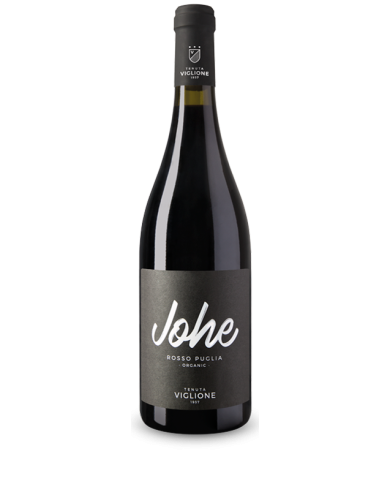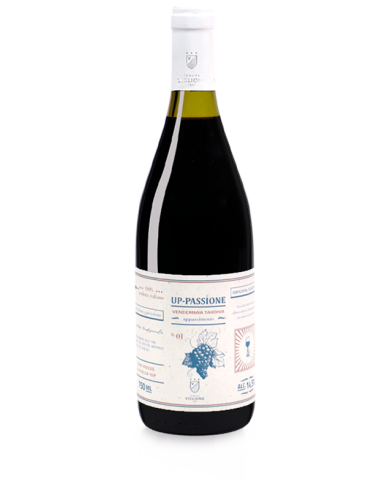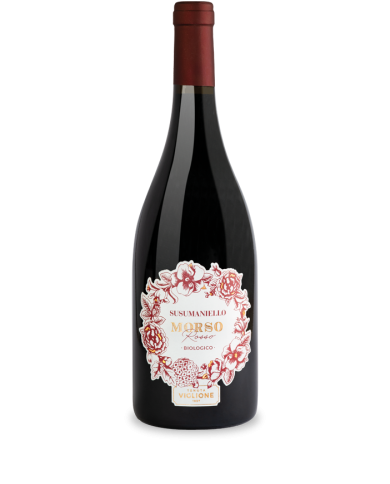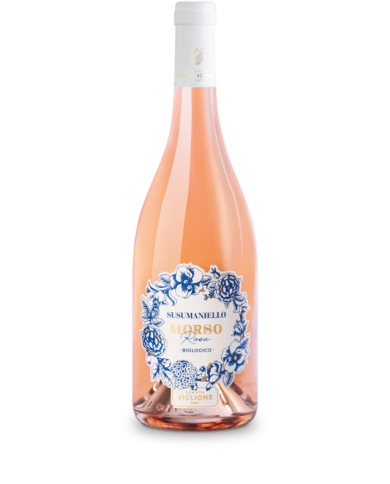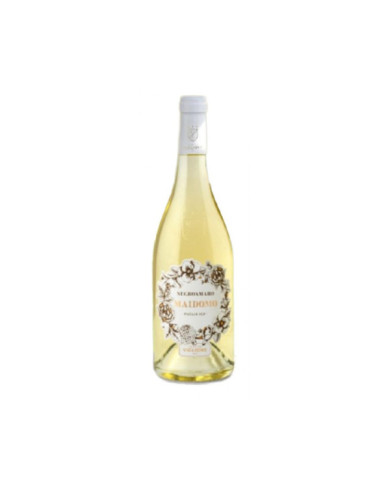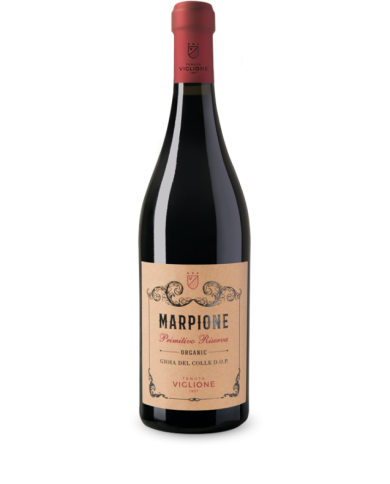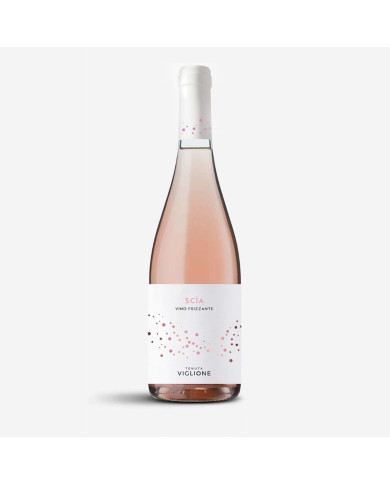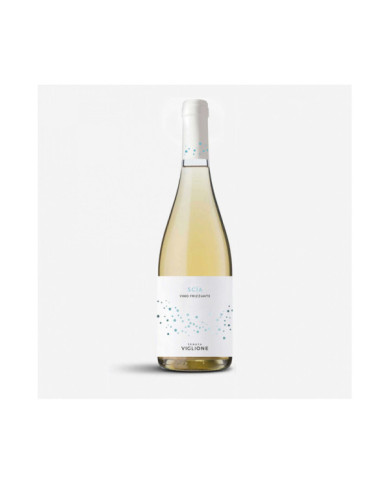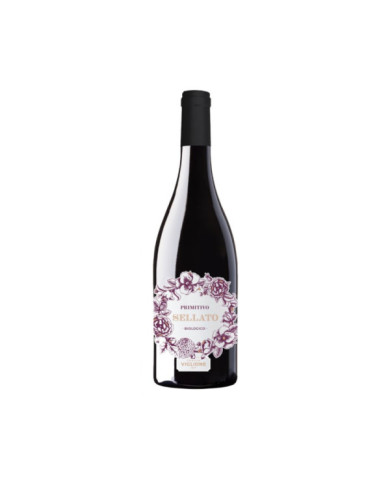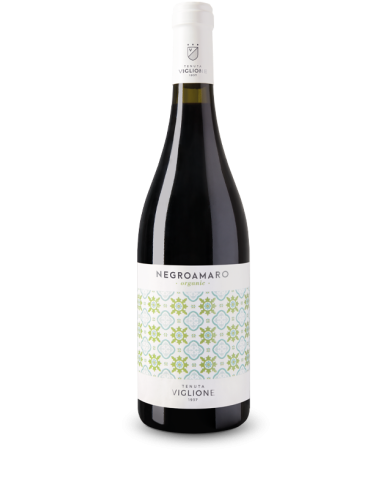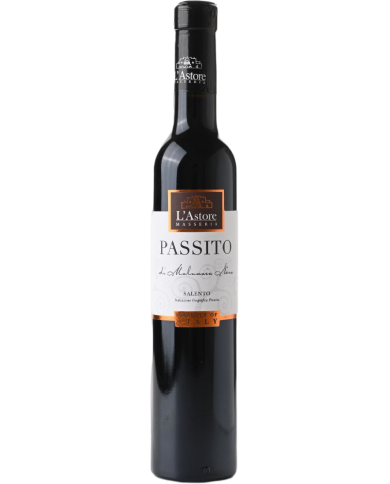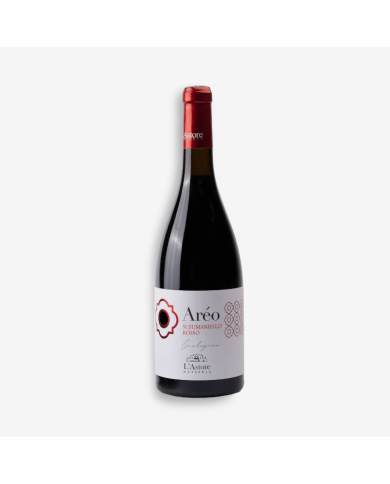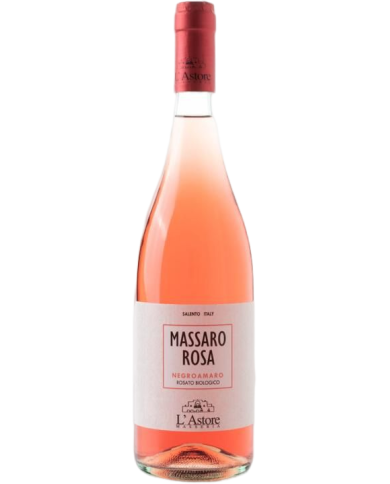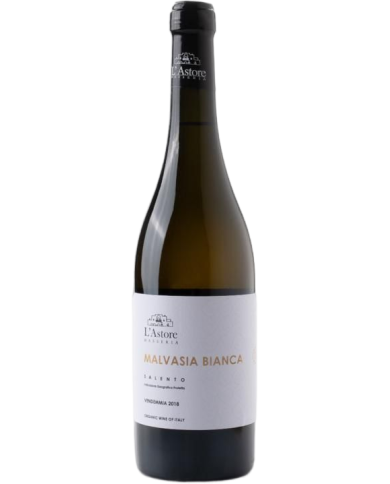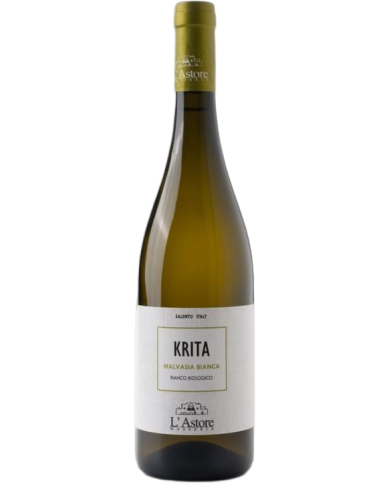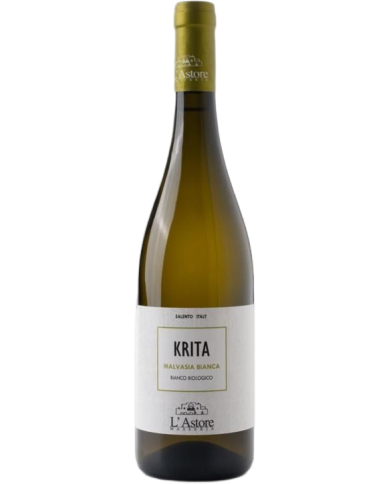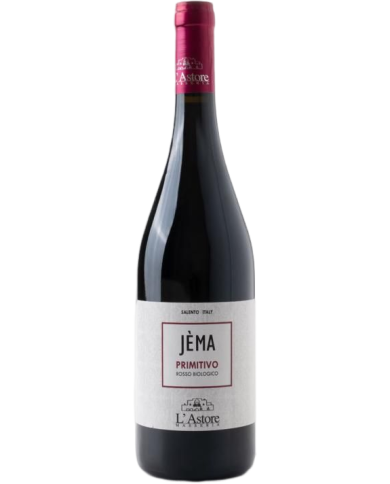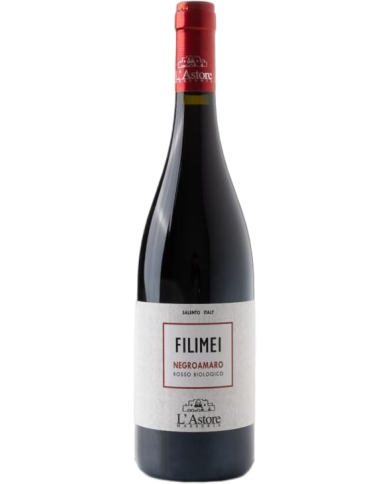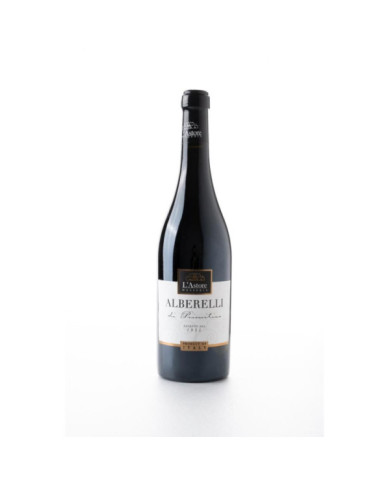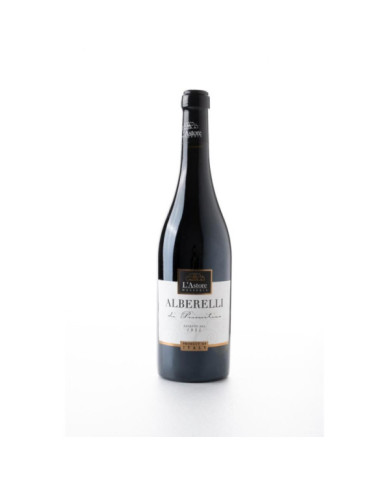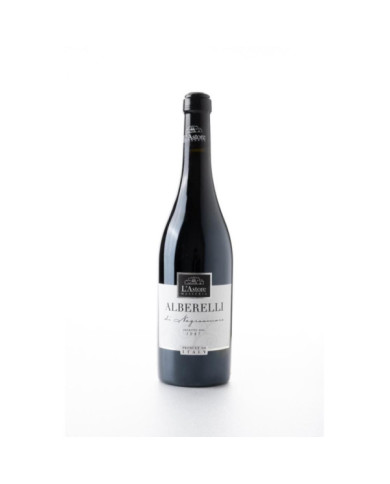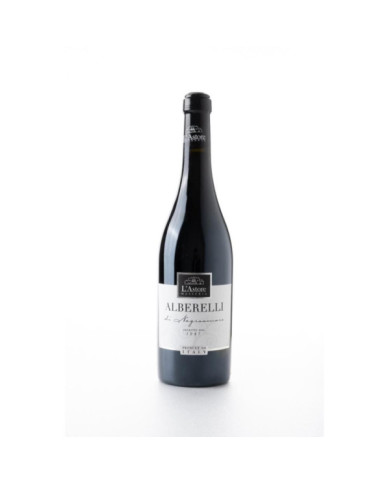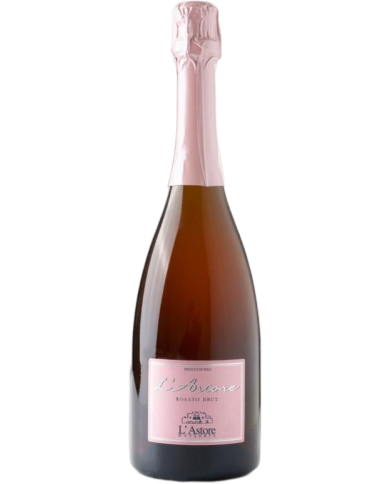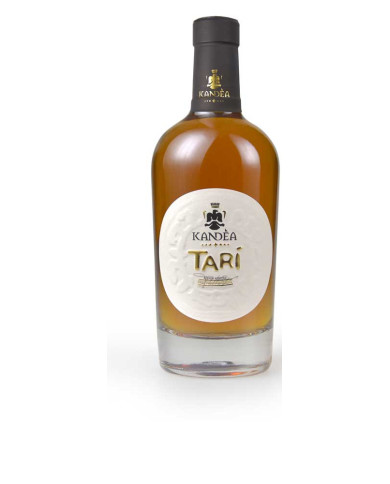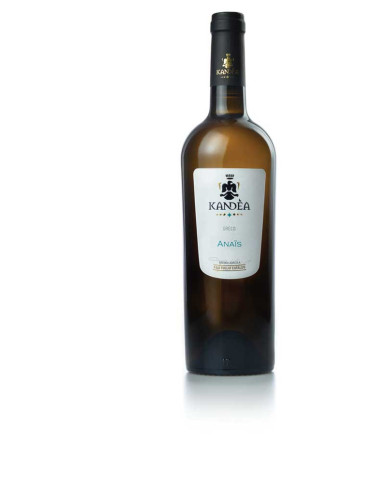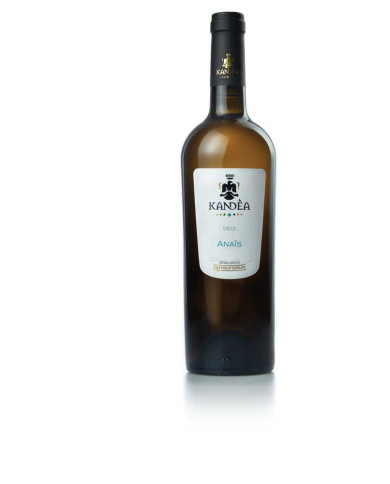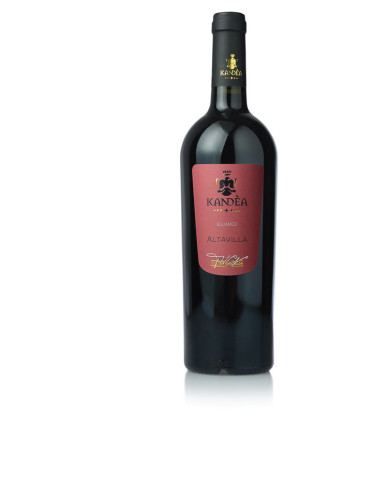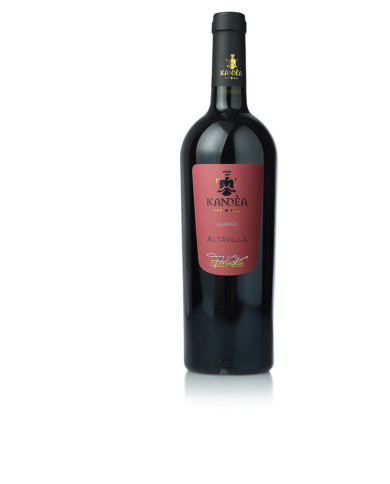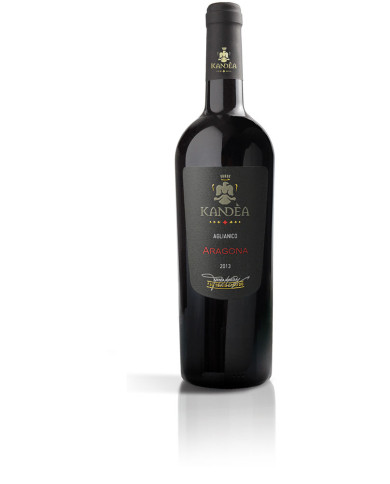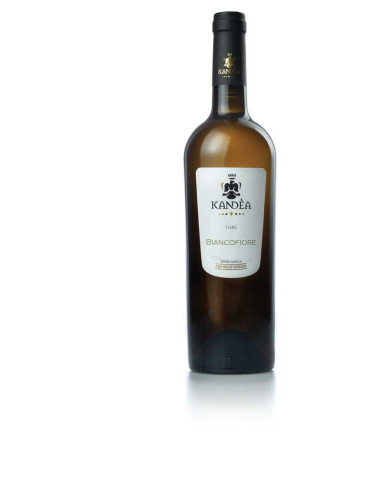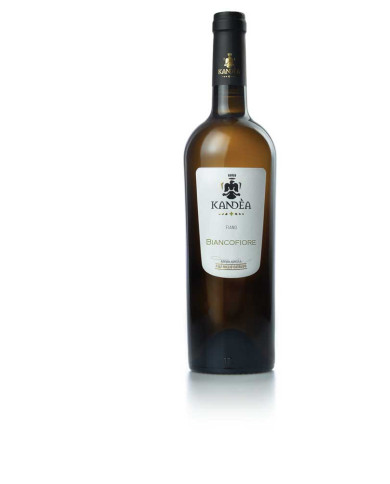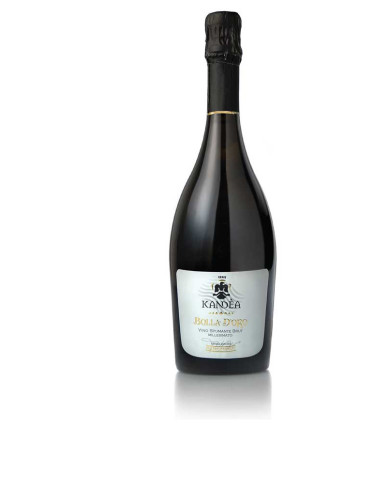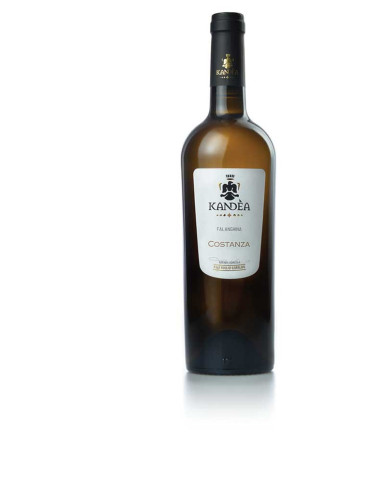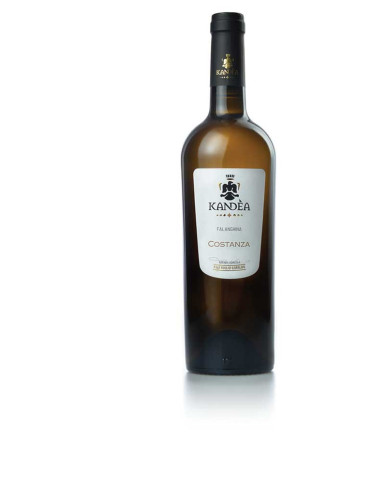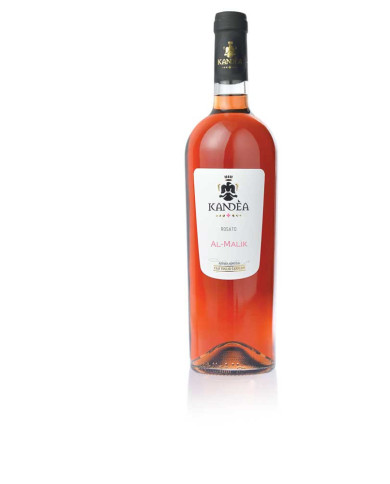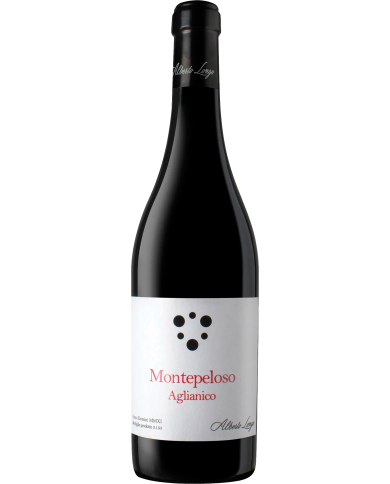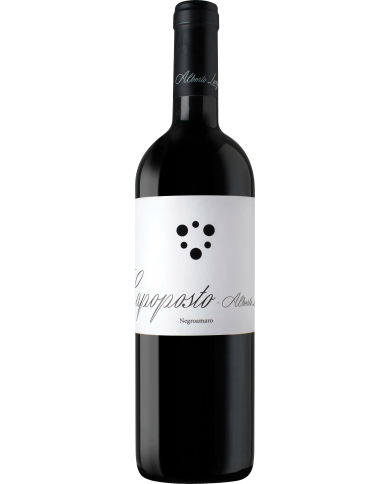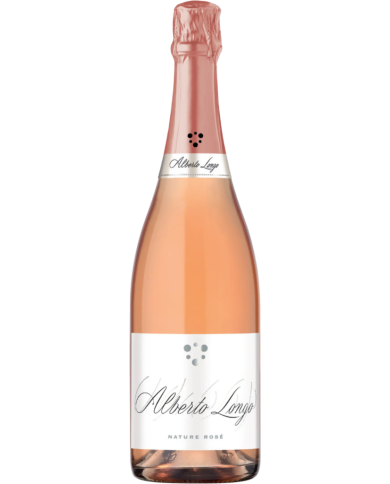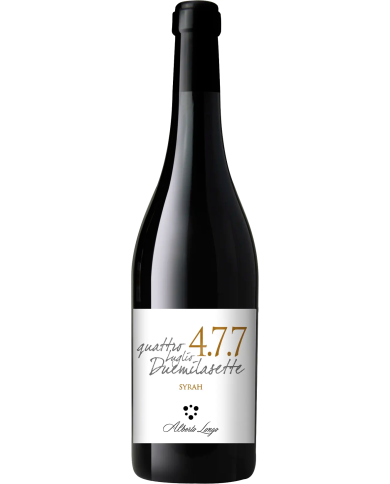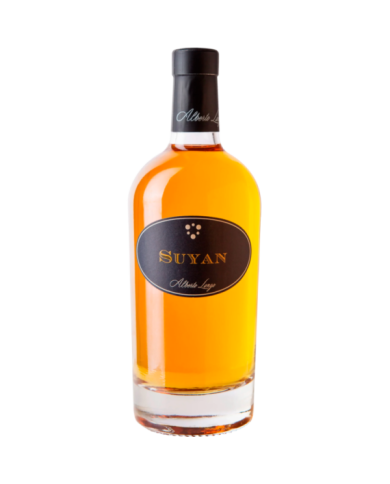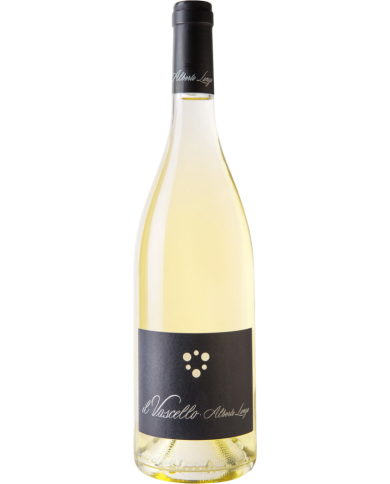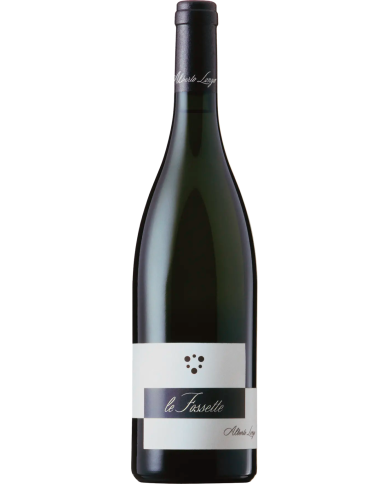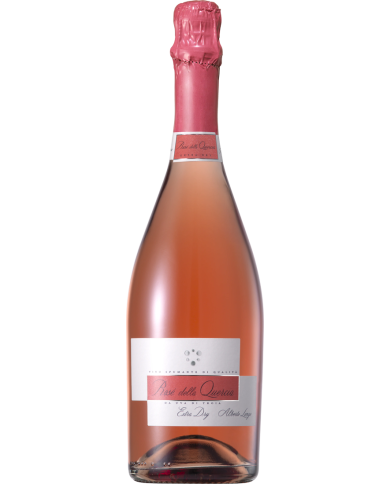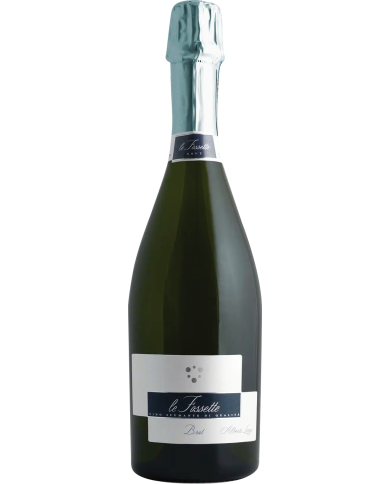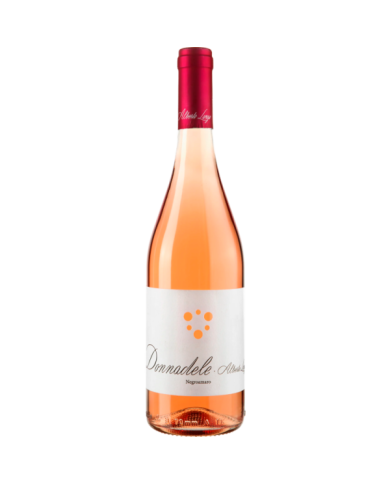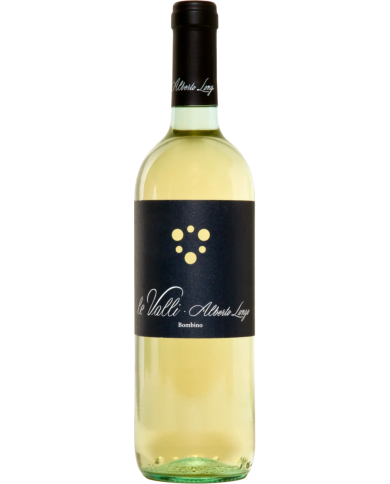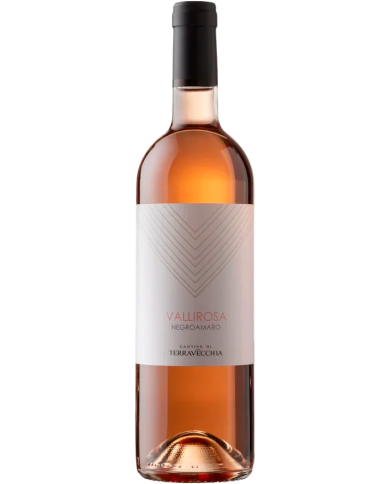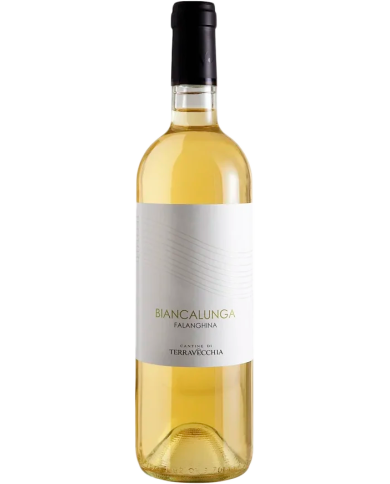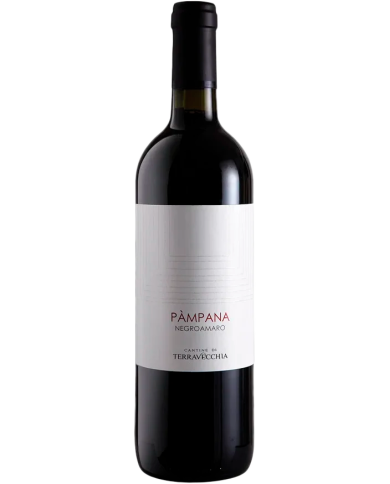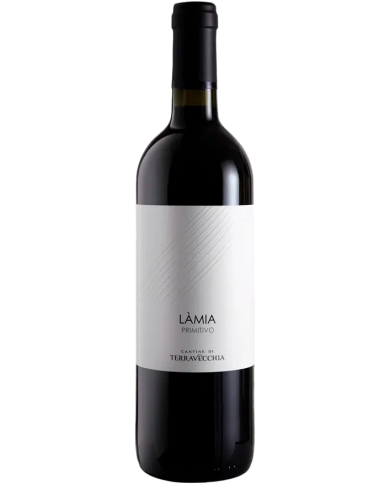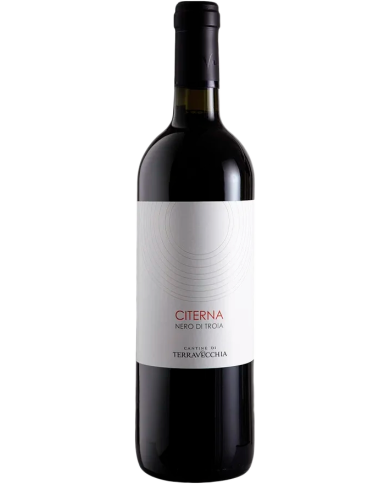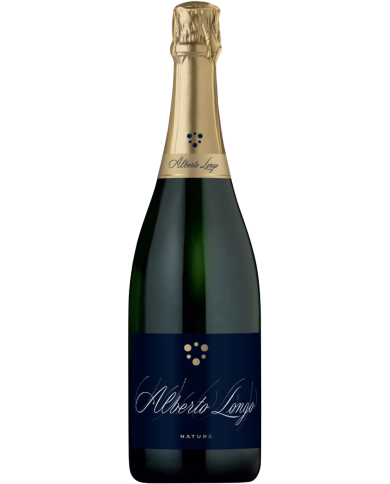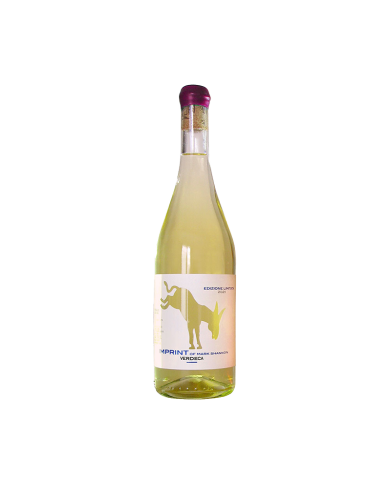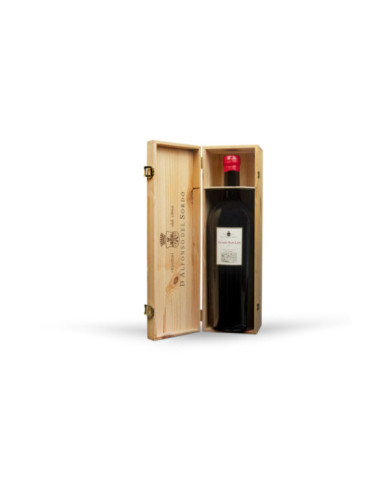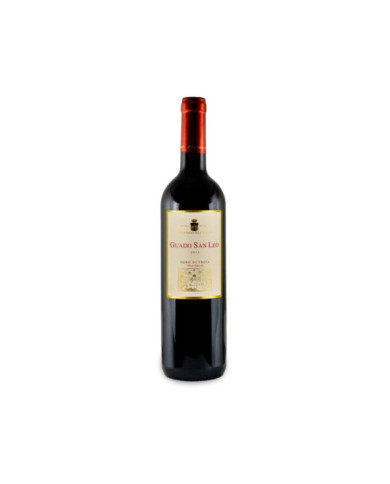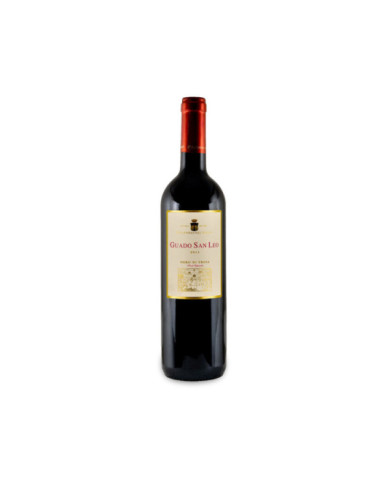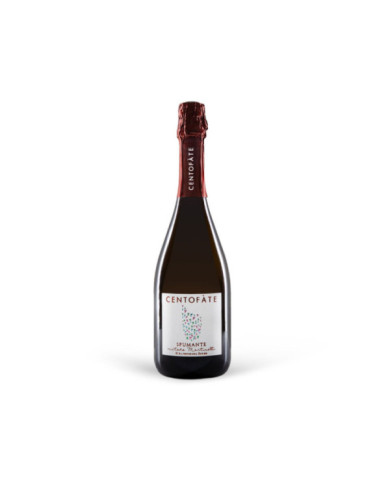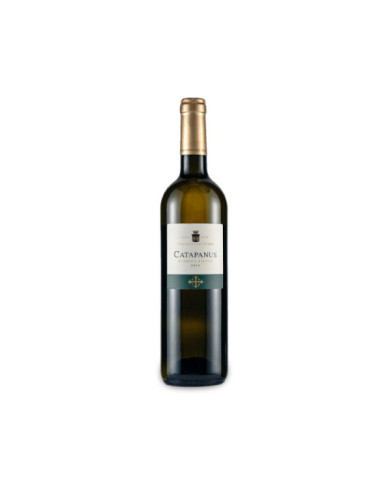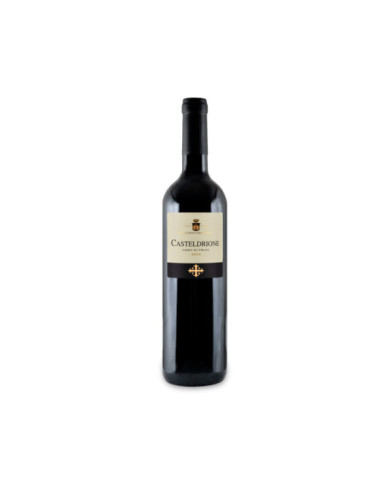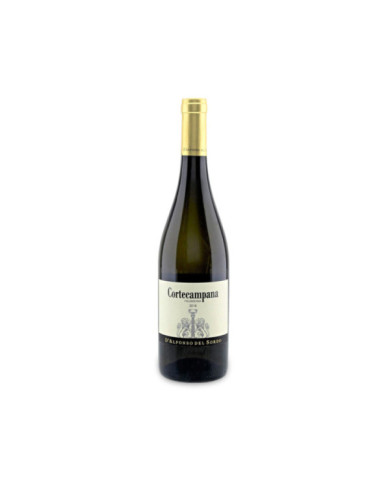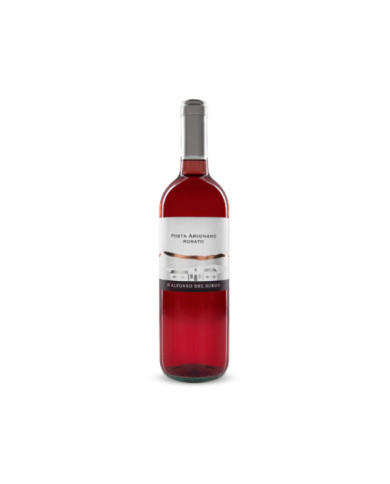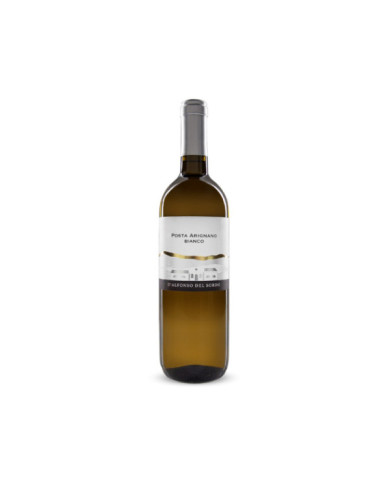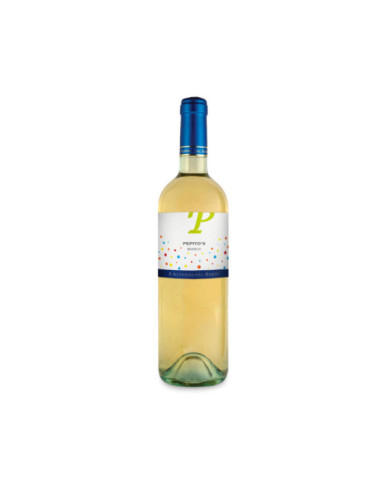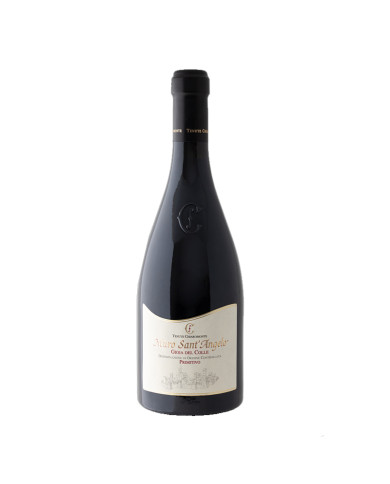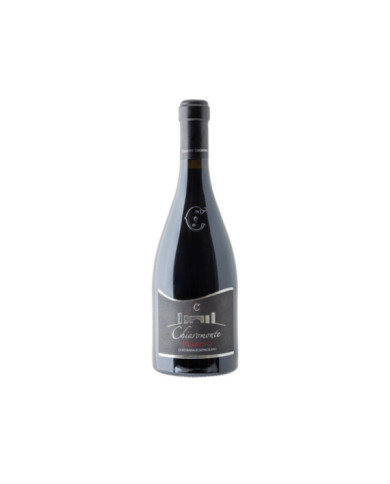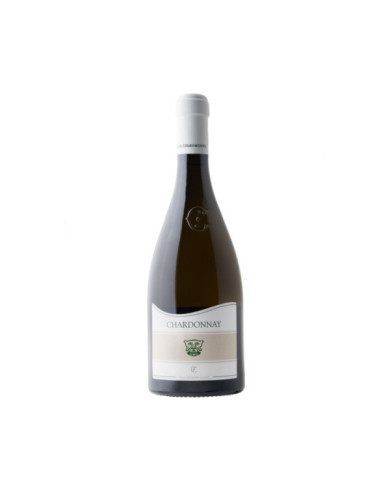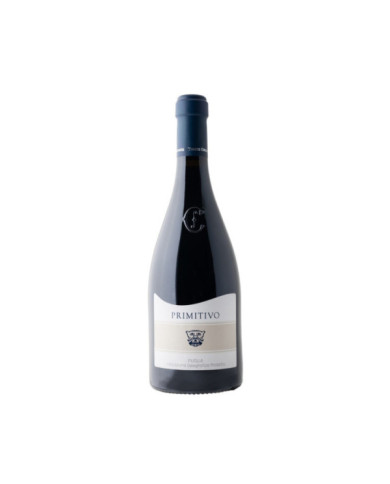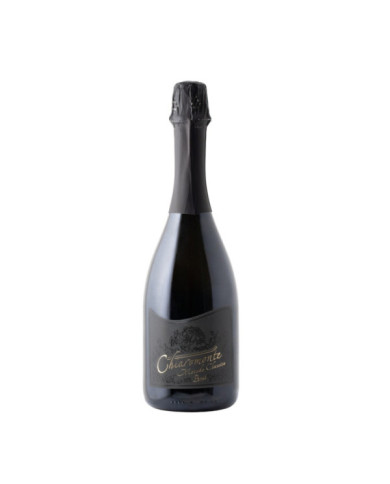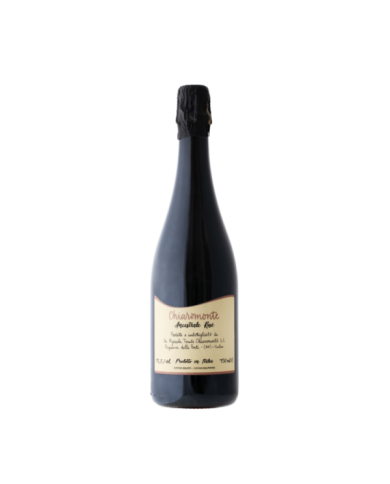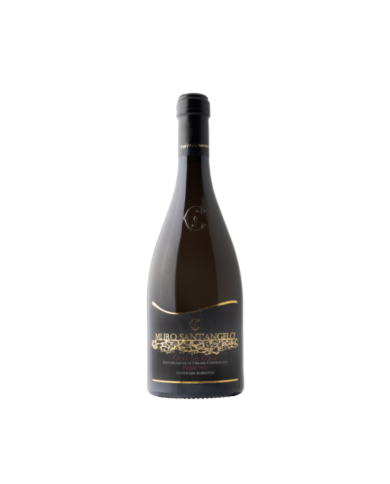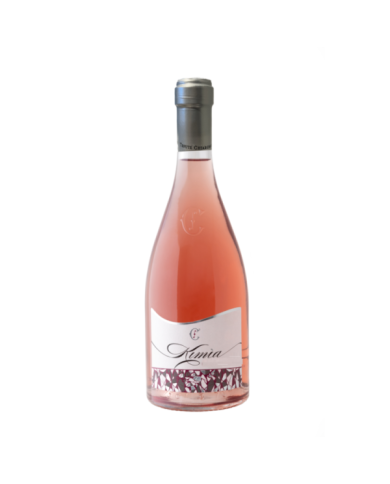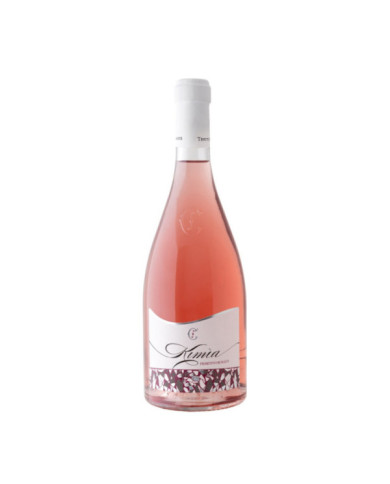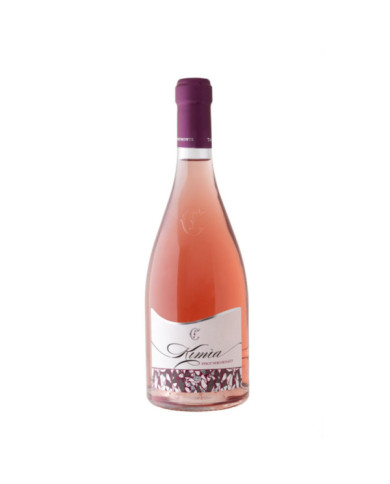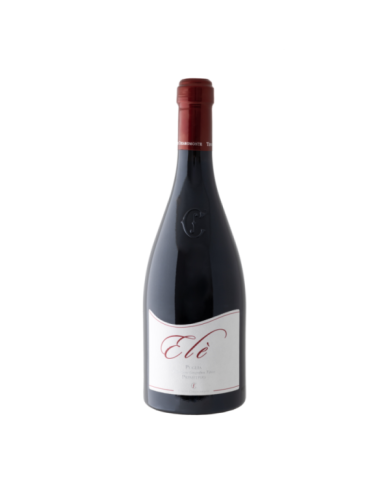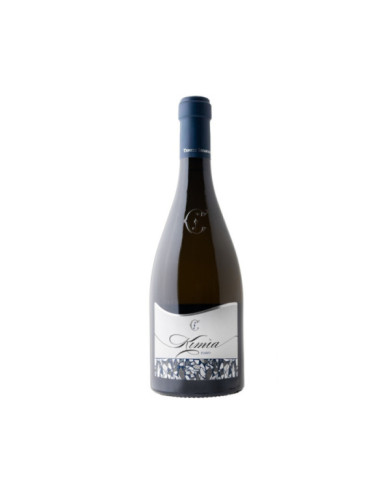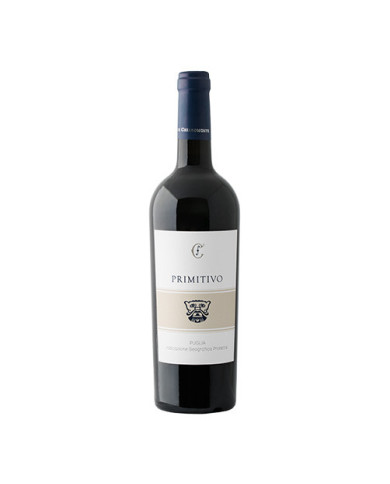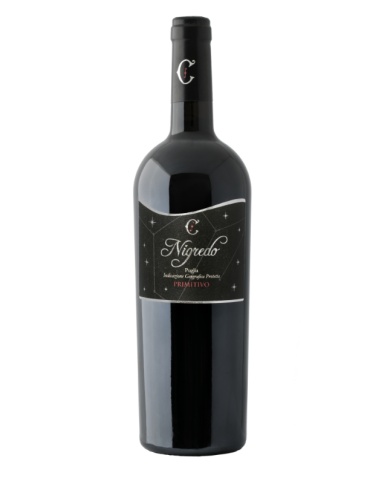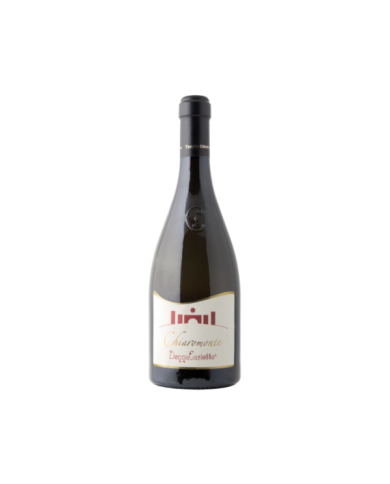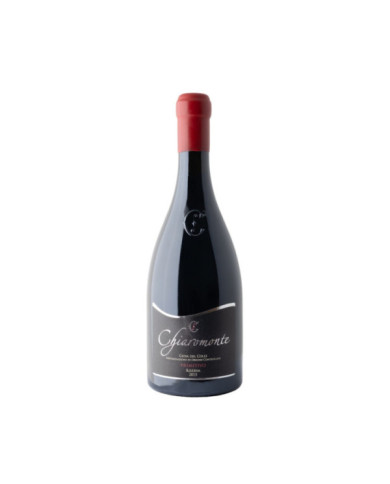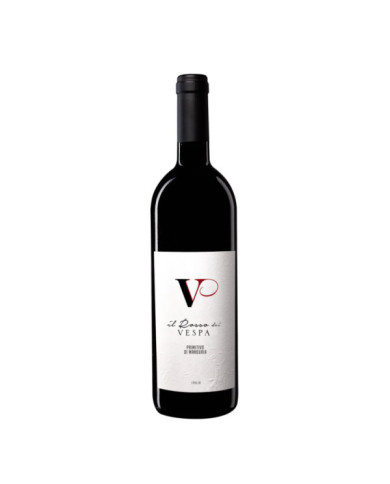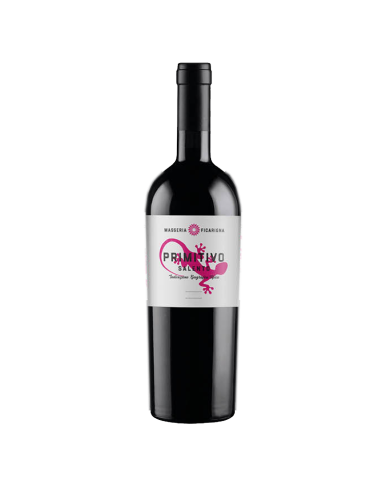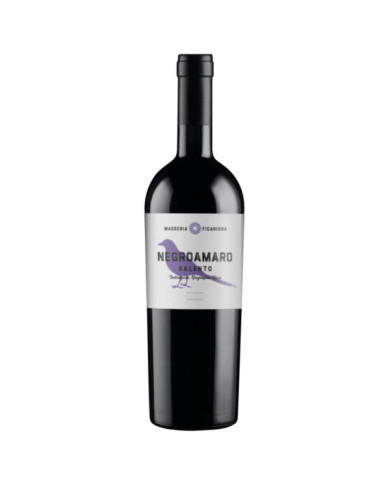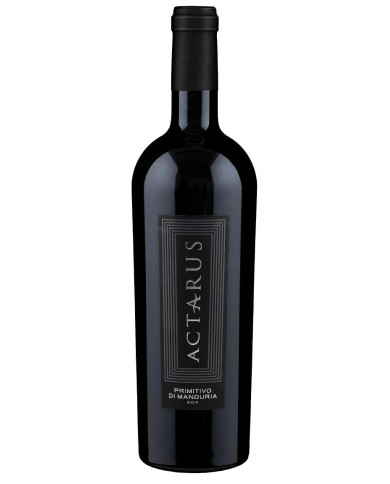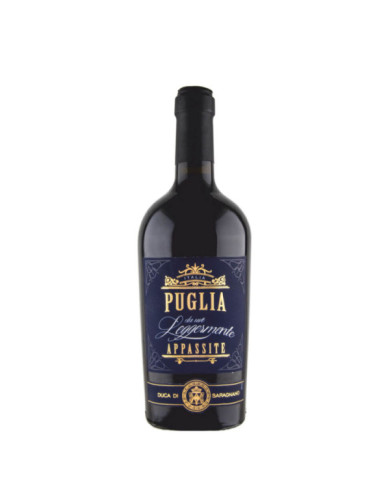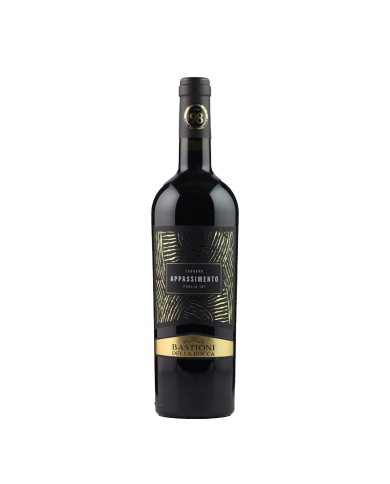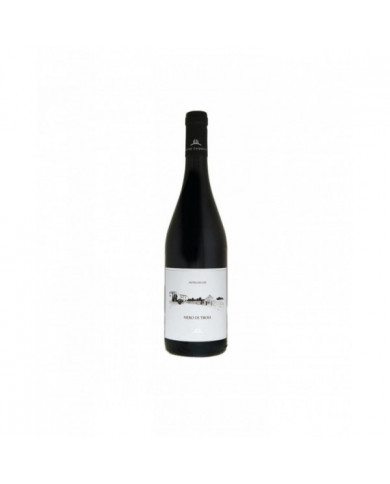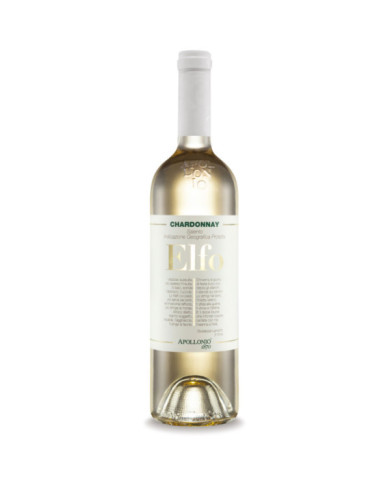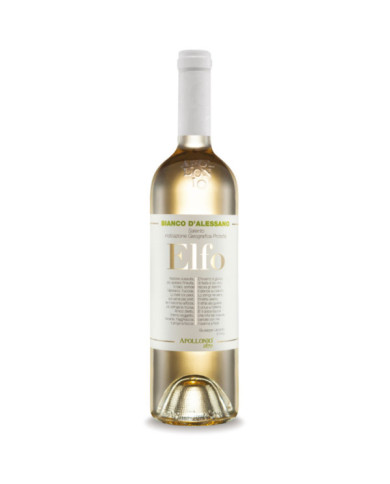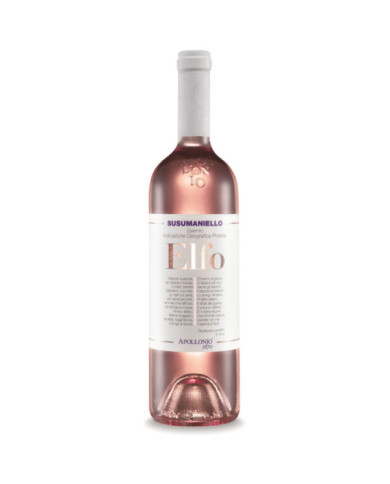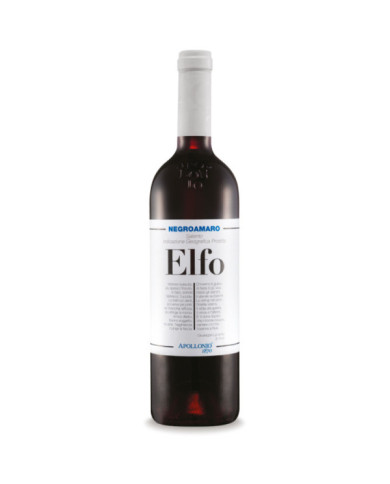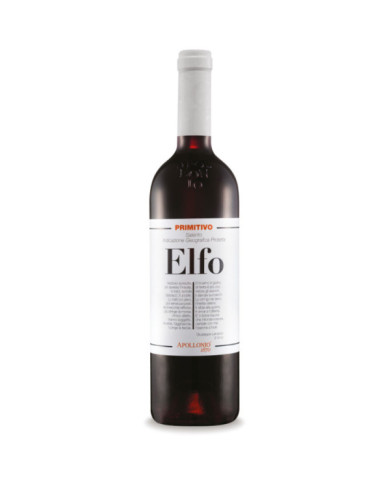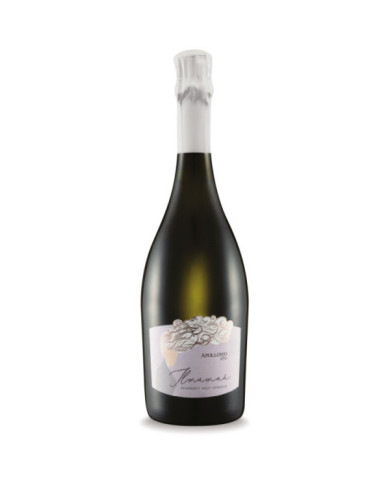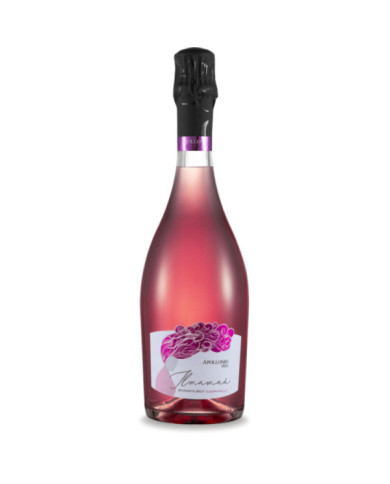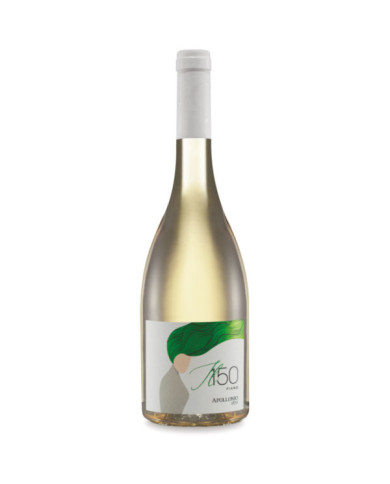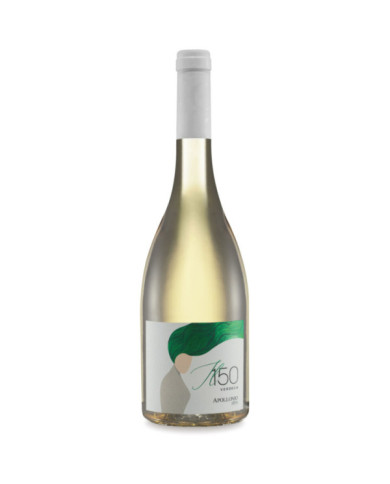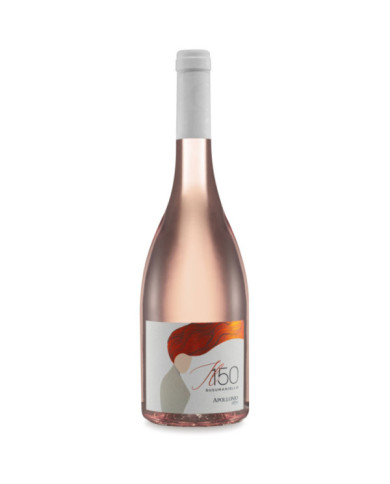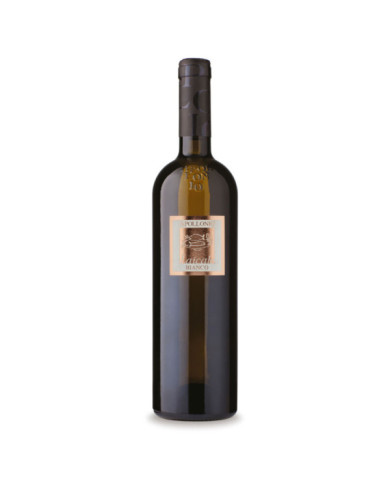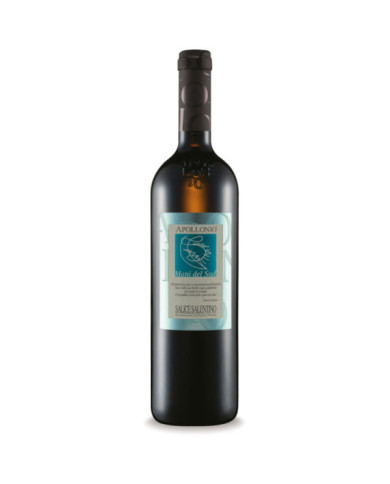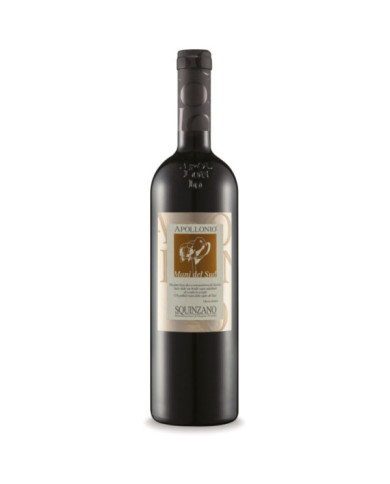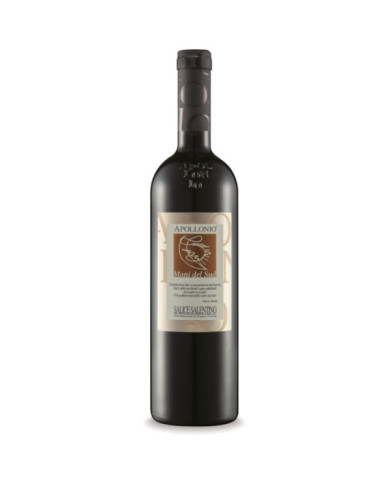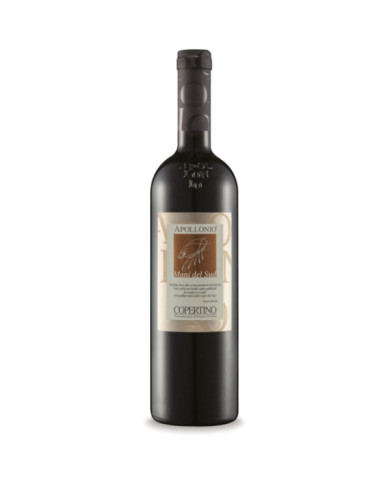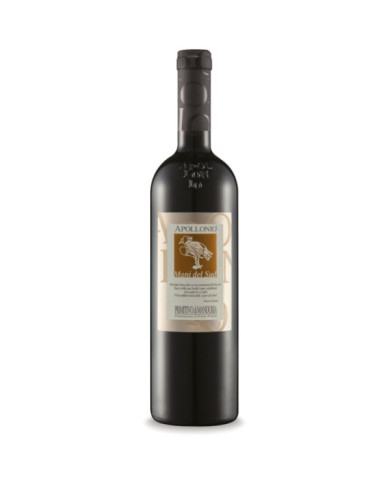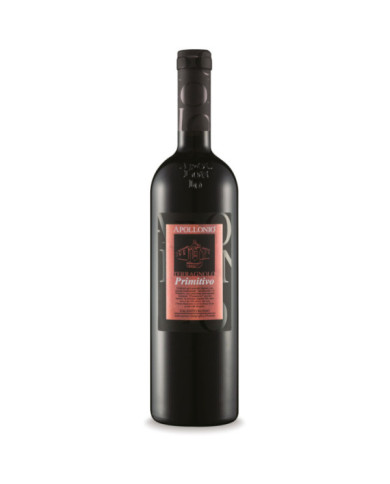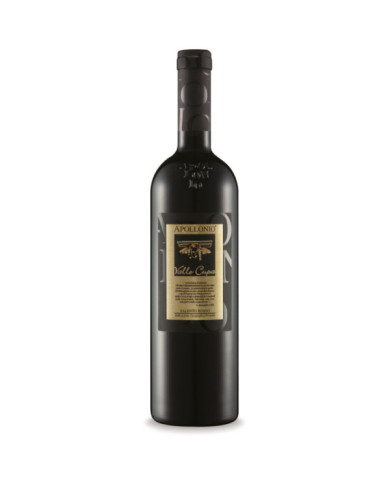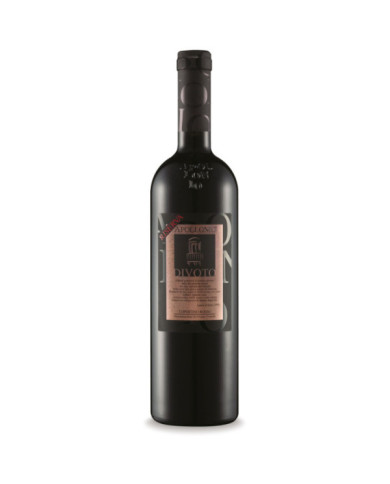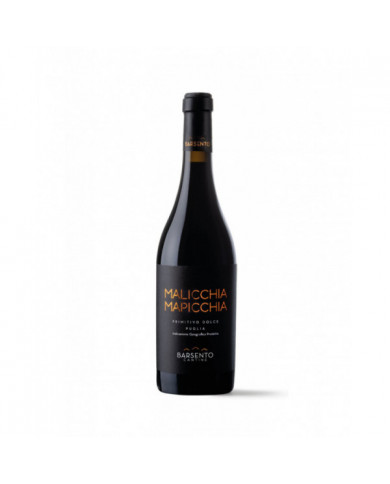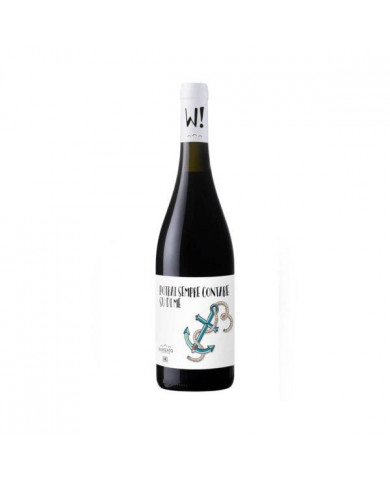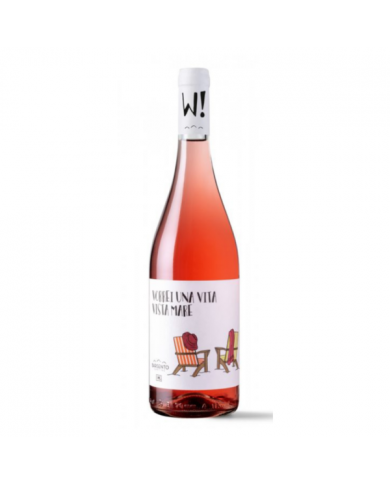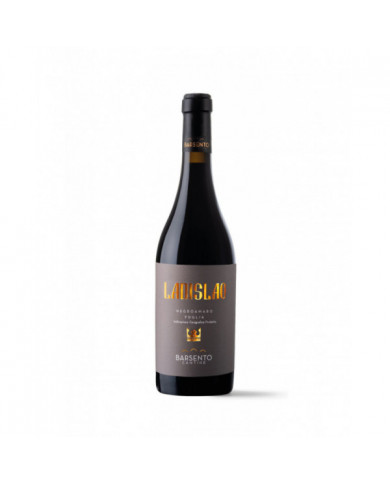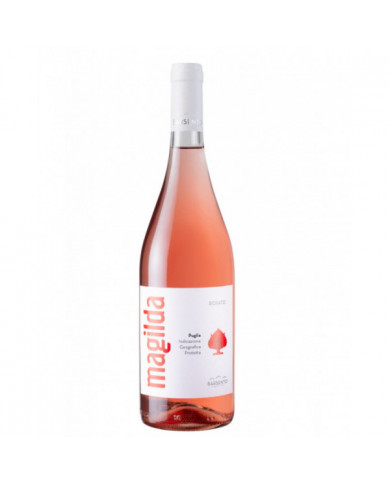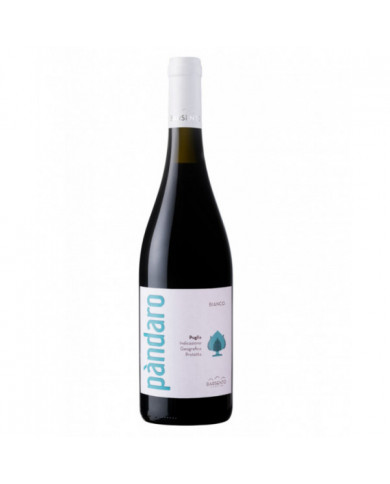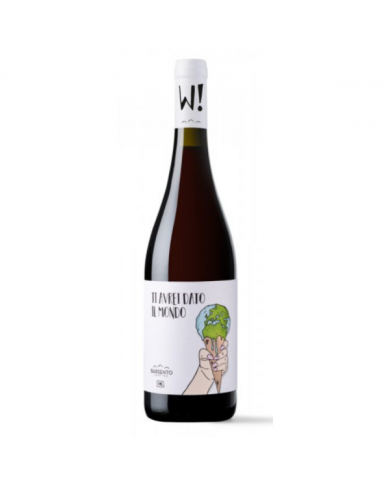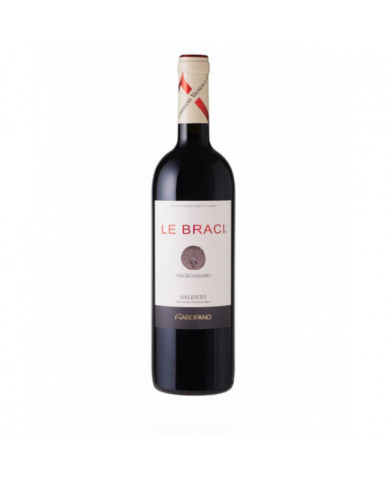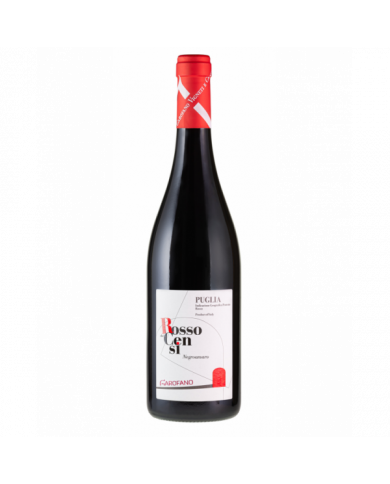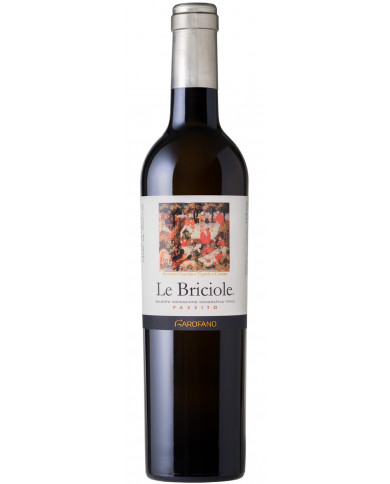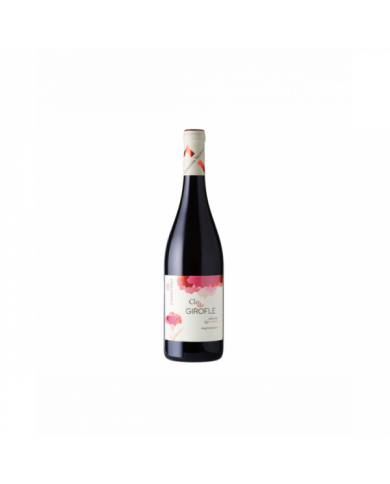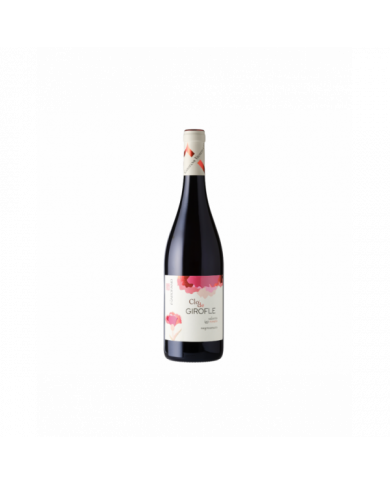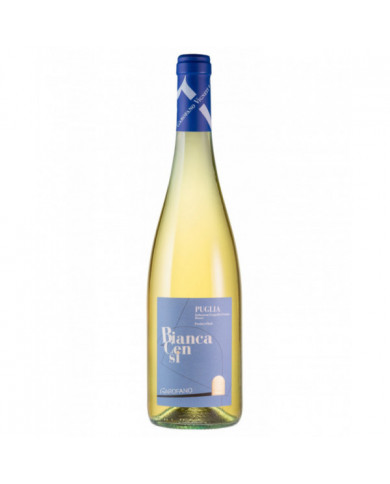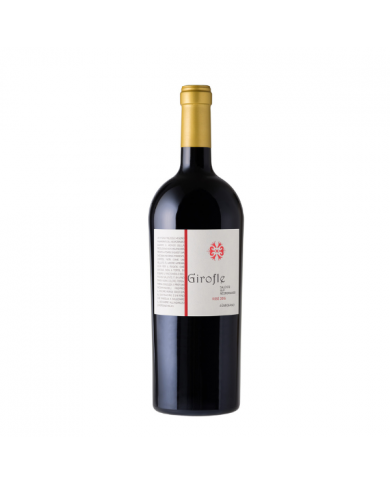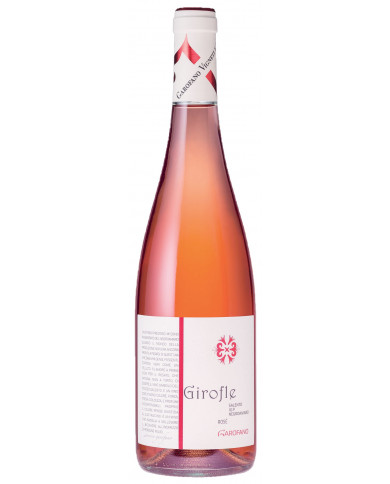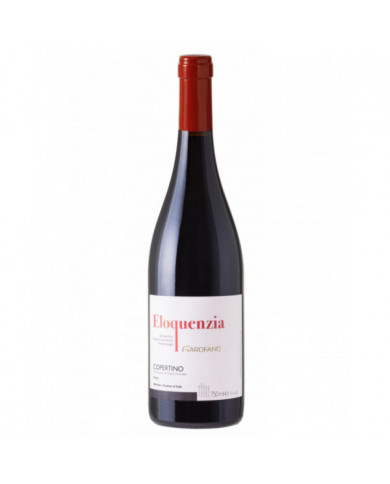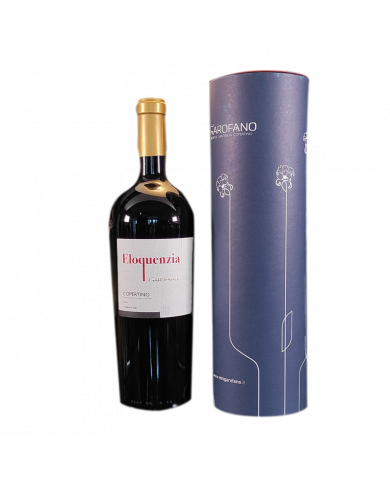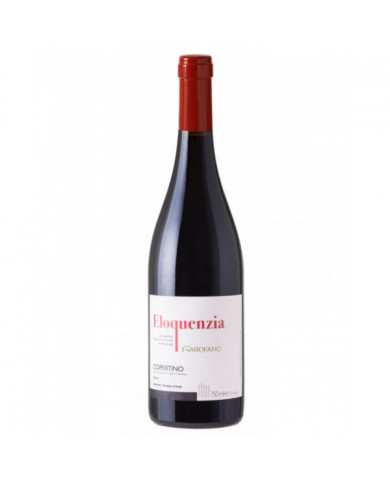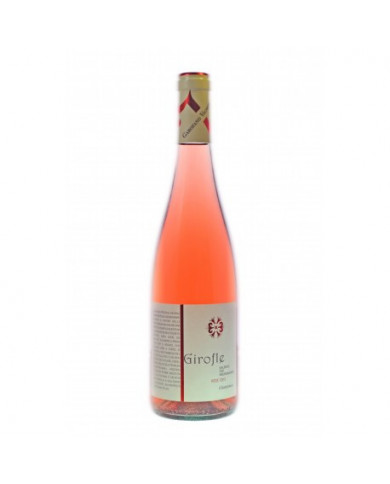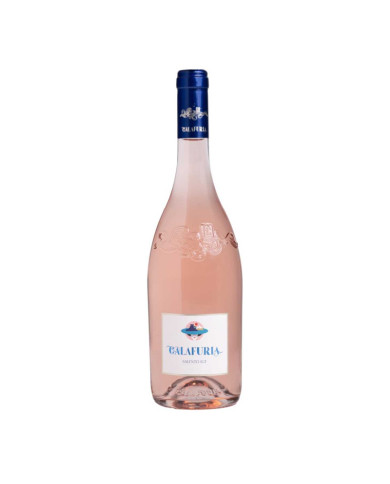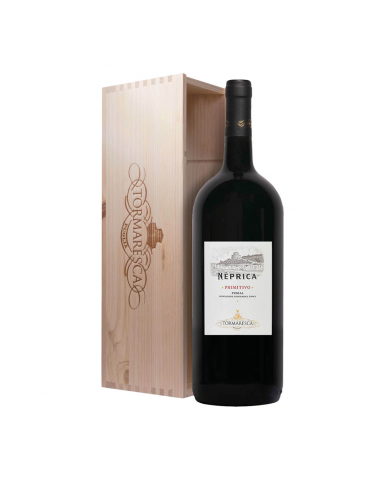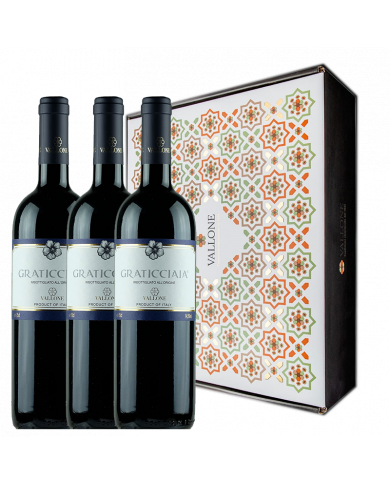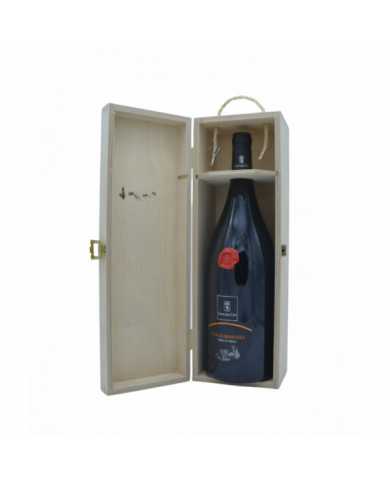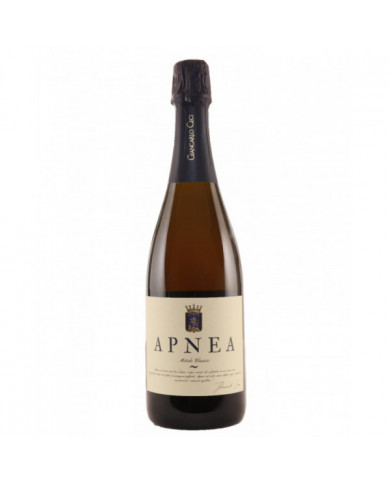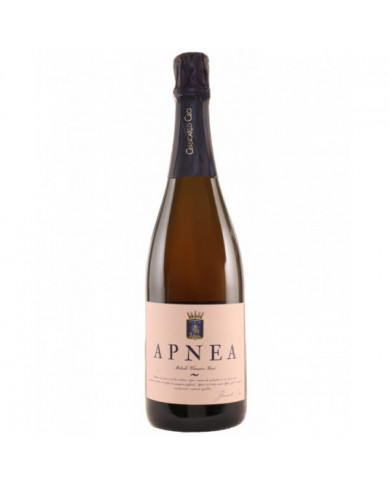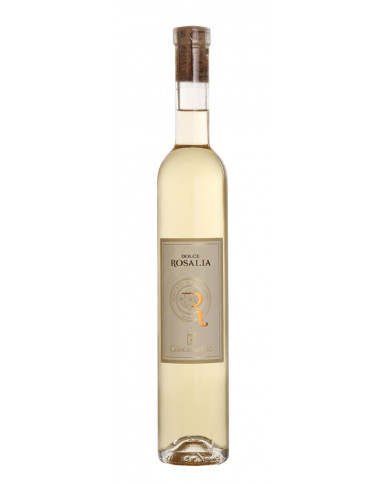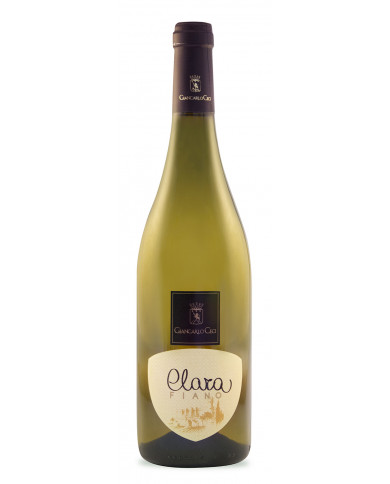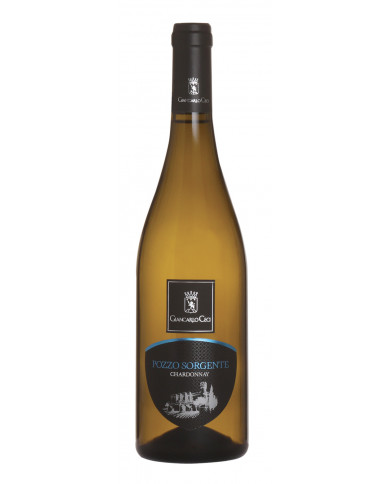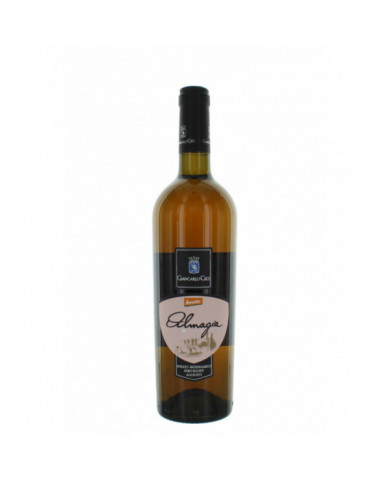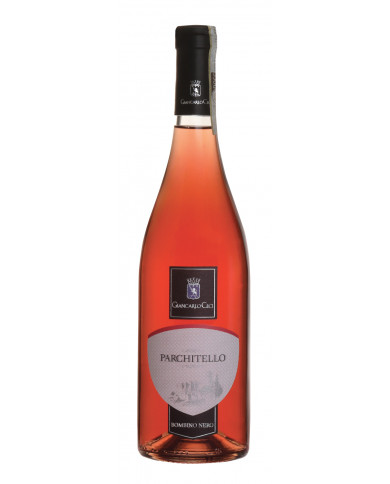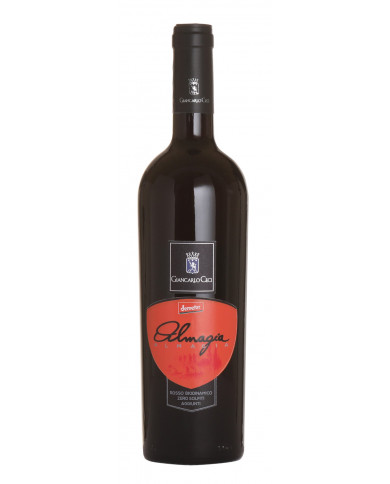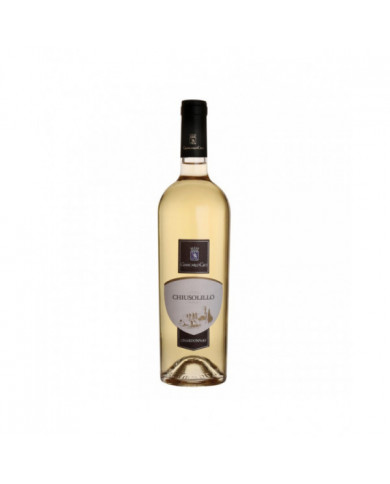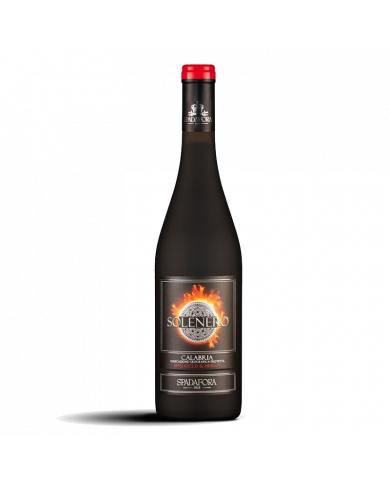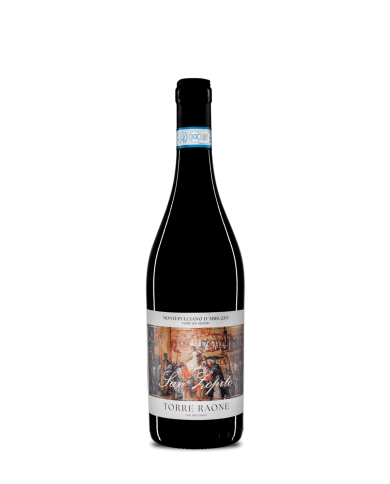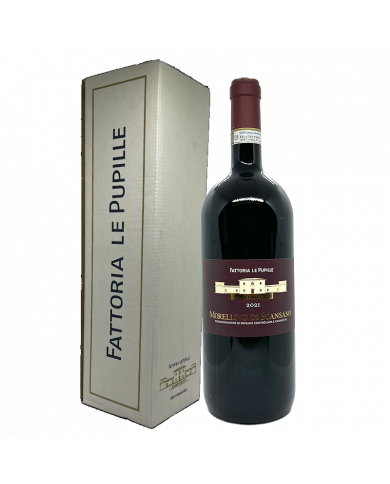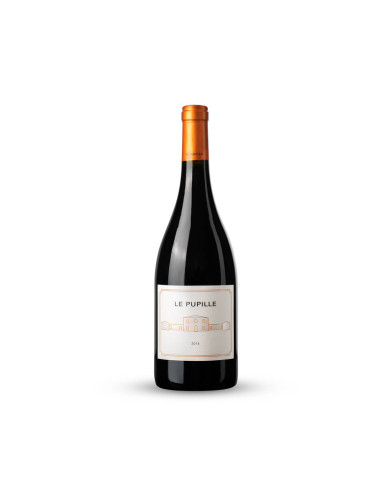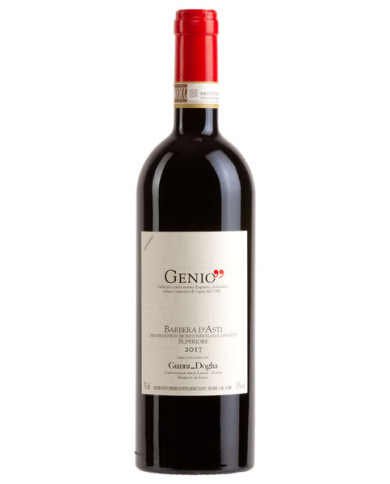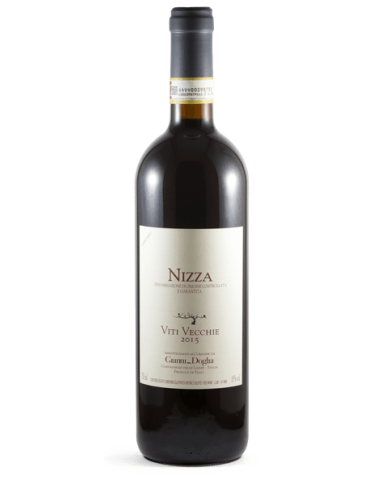Pur utilizzando solo uve âNero di Troiaâ, Luigi Nota realizza un bianco spumante âMetodo Classicoâ e un rosĂ©, sempre metodo classico, di assoluta eccellenza, il âRegina Luciaâ. Lâazienda, dunque, copre una nicchia produttiva innovativa e dâeccellenza, ma Ă© molto legata al territorio. A partire dalla piccola vigna del nonno, Luigi Nota ha appreso il mestiere di vignaiolo dal padre Vincenzo e negli ultimi anni si Ăš fatto promotore di un ritorno alla terra della famiglia a partire dal 2013.
Pur utilizzando solo uve âNero di Troiaâ, Luigi Nota realizza un bianco spumante âMetodo Classicoâ e un rosĂ©, sempre metodo classico, di assoluta eccellenza, il âRegina Luciaâ.
«Thus a single heat of many embers is felt ..." - (Dante) Intense color with purple reflections, tending towards garnet. Soft, elegant, sumptuous on the palate, it gives the nose an intense and rich bouquet and a long persistence of taste-olfactory sensations. The overripeness of the grapes, or rather the forced wilting of the berries, gives the wine a complex structure. It is a wine that develops all its potential already during aging in small wooden barrels, which, in addition to stabilizing the colour, induces a reduction in astringency; the wine acquires a fresh aroma and a regal sumptuousness. Its aromas of flowers and fruit are clearly evident: mint, plum, very subtle notes of fruit, licorice, vanilla and spices. The softness of its long flavor closes with a pleasant bitter vein of the vine from which it derives: Negroamaro. GRAPE VARIETIES: Negroamaro 100%
The "Cantalupi" Rosso Salice Salentino from the Conti Zecca winery is a full-bodied and elegant red wine with an intense ruby color. On the nose emerge aromas of ripe fruit such as blackberries and plums, and hints of spices. Harmonious, velvety and rightly tannic flavour. It ages for a few months in concrete tanks before being bottled.
Red with purplish hues, complex aromas with spicy hints, cocoa, coffee, licorice and red berried fruits. With elegant, soft tannins and velvety on the palate. Persistent with an aftertaste of spices.
Intense red color with violet notes. Intense, fruity nose with hints of plum and ripe cherry; cinnamon spice. Persistent, soft and enveloping on the palate with elegant tannins and hints of black cherry. Excellent with grilled red meats, lamb, aged cheeses, dark chocolate and such meditation wine.
Ruby red with garnet hues. Fragrant range of black cherry, laurel and tobacco, on a vanilla base. Warm and generous, with returns of fruit and licorice.
Fresh, balanced and savory sparkling wine with a fruity aftertaste. Ideal to accompany aperitifs and raw seafood.
Dark purplish that almost absorbs light. Southern Italy is released in the mouth and nostrils with a mélange of fruit and chocolate. A full and ethereal wine
Ruby red color with violet reflections; clean nose, good intensity and harmonic. Hints of cherry and plum, clean, dry and tannic palate, with good intensity and persistence.
Red wine with a ruby red color with violet reflections; scent of undergrowth with red fruits and wild berries; dry, balanced, full-bodied palate. Nice acidity and soft tannins, persistent. Ideal pairing with roast meats and fresh cheeses.
Born from clean and sustainable agriculture, respecting a landscape designed by culture and tradition, since 2010 the wines of L'Astore are certified "produced from organic grapes". Symbol of the Salento area in its rosé vocation and in the old Alberelli di Negroamaro and Primitivo; the production enhances the ancient native vines such as Negroamaro, Malvasia Nera, Malvasia Bianca Antica, Susumaniello and Primitivo.
Born from clean and sustainable agriculture, respecting a landscape designed by culture and tradition, since 2010 the wines of L'Astore are certified "produced from organic grapes". Symbol of the Salento area in its rosé vocation and in the old Alberelli di Negroamaro and Primitivo; the production enhances the ancient native vines such as Negroamaro, Malvasia Nera, Malvasia Bianca Antica, Susumaniello and Primitivo.
Born from clean and sustainable agriculture, respecting a landscape designed by culture and tradition, since 2010 the wines of L'Astore are certified "produced from organic grapes". Symbol of the Salento area in its rosé vocation and in the old Alberelli di Negroamaro and Primitivo; the production enhances the ancient native vines such as Negroamaro, Malvasia Nera, Malvasia Bianca Antica, Susumaniello and Primitivo.
Born from clean and sustainable agriculture, respecting a landscape designed by culture and tradition, since 2010 the wines of L'Astore are certified "produced from organic grapes". Symbol of the Salento area in its rosé vocation and in the old Alberelli di Negroamaro and Primitivo; the production enhances the ancient native vines such as Negroamaro, Malvasia Nera, Malvasia Bianca Antica, Susumaniello and Primitivo.
Born from clean and sustainable agriculture, respecting a landscape designed by culture and tradition, since 2010 the wines of L'Astore are certified "produced from organic grapes". Symbol of the Salento area in its rosé vocation and in the old Alberelli di Negroamaro and Primitivo; the production enhances the ancient native vines such as Negroamaro, Malvasia Nera, Malvasia Bianca Antica, Susumaniello and Primitivo.
Born from clean and sustainable agriculture, respecting a landscape designed by culture and tradition, since 2010 the wines of L'Astore are certified "produced from organic grapes". Symbol of the Salento area in its rosé vocation and in the old Alberelli di Negroamaro and Primitivo; the production enhances the ancient native vines such as Negroamaro, Malvasia Nera, Malvasia Bianca Antica, Susumaniello and Primitivo.
Aglianico, brought to Italy by the Greeks as early as the 6th century aC , takes its name from the "Vitis Hellenica", whose qualities are repeatedly sung in the odes of Horace and in the writings of masters consigned to history such as Pliny and Virgil. The high complexity and deep structure of Aglianico, grown directly in the company's vineyards, give Altavilla an extraordinary aptitude for aging in the bottle.
The grape variety chosen for the spumante base of Bolla d'Oro is the "Bombino Bianco". Its ancient origins probably date back to the challenge of Barletta and the Spaniards. It prefers deep, draining soils and is certainly one of the most interesting grapes for sparkling wine. Bolla D'oro is born from the application of the long charmat method, with a fermentation period of no less than 40 days sur lie which gives an absolutely unique and original roundness and fullness to the tasting (texture), enhanced by a fine and persistent perlage. Vin de fete, with a great personality and an intriguing bouquet in which notes of apricot and white peach predominate with white flowers (blossom) and dried fruit intruding on the finish.
Intense and enveloping wine, with notes of red berries and spicy aromas.
Wine with a fresh, intense and persistent taste, with fruity and floral notes.
Mark is a winemaker and comes from California. I, Helvetia, am Friulian. We met in Sicily in 1997. In 1998 Mark proposed that I visit Puglia to see the old Primitivo vineyards. According to studies by the University of Davis in California Primitivo and Californian Zinfandel are genetically identical.
GUADO SAN LEO is the first wine of our company obtained solely from NERO DI TROIA grapes and has contributed together with other Apulian wines to the rebirth of this important vine. The grapes, coming from our "Coppanetta" estate, are harvested by hand in 15 kg boxes before being sent for vinification. with scrupulous selection.
GUADO SAN LEO is the first wine of our company obtained solely from NERO DI TROIA grapes and has contributed together with other Apulian wines to the rebirth of this important vine. The grapes, coming from our "Coppanetta" estate, are harvested by hand in 15 kg boxes before being sent for vinification. with scrupulous selection.
The hot year with little rain has delivered healthy and ripe grapes which translates into a wine of intense color, the scarcity of rain combined with high temperatures has led to a lowering of the acid content giving the wines characteristics of intensity, alcohol and roundness , with precise and blended tannins. Also for this vintage it was necessary to anticipate the harvest by a few weeks to avoid water stress phenomena on the plants. The overall results are however very interesting due to the general balance we find in the wines produced in this vintage.
GUADO SAN LEO is the first wine of our company obtained solely from NERO DI TROIA grapes and has contributed together with other Apulian wines to the rebirth of this important vine. The grapes, coming from our "Coppanetta" estate, are harvested by hand in 15 kg boxes before being sent for vinification. with scrupulous selection.
It has a brilliant straw yellow color with a thin perlage. The bouquet expresses fruity notes of apple, peach and orange.
CATAPANUS was the name of the ancient provincial delegate of the emperor, in charge of the military and civil government of the whole of southern Italy in the Byzantine period. We wanted to dedicate our most important white grape variety in our area to this authoritative figure: BOMBINO BIANCO
Legend has it that Diomedes, after marrying Driona, daughter of King Dauno, had a small temple with an altar dedicated to Calchas built on a low hill called Drion. In this place called Castrum Drionis or CASTELDRIONE the city of San Severo will rise.
The sound of the bell has always marked important moments in the life of the populations: in fact, in rural areas, the sound of the bell often indicated the moment of pause in which the peasants stopped working to consume their meal. Even today, in many ancient Apulian farms, we can see in the central space called "court", the presence of a small bell.
DAMMIROSE was born from the desire to give ever greater expressiveness to a vine that we can now define as the main one within the Apulian regional ampelography. In fact, NERO DI TROIA, even in rosé vinification, is very versatile, giving the wines exclusive characteristics.
MONTERO was born from the union of the terms Montepulciano and San Severo and wants to underline the strong bond of this important vine to our territory. MONTERO is one of the first labels put on the market by our company in the 1960s. The current blend, in addition to the presence of Montepulciano, includes a small percentage of Cabernet Sauvignon which manages to better soften the vigorous tannins and make the aromatic spectrum more complex.
POSTA ARIGNANO is the name of the ancient farmhouse that stands in the center of the "Coppanetta" estate where, in ancient times, travelers who crossed the Daunia lands found refreshment and very often also the shepherds in transhumance from nearby Abruzzo. Today the farm is surrounded by about 30 hectares. of vineyards that give rise to most of our labels.
POSTA ARIGNANO is the name of the ancient farmhouse that stands in the center of the "Coppanetta" estate where, in ancient times, travelers who crossed the Daunia lands found refreshment and very often also the shepherds in transhumance from nearby Abruzzo. Today the farm is surrounded by about 30 hectares. of vineyards that give rise to most of our labels.
POSTA ARIGNANO is the name of the ancient farmhouse that stands in the center of the "Coppanetta" estate where, in ancient times, travelers who crossed the Daunia lands found refreshment and very often also the shepherds in transhumance from nearby Abruzzo. Today the farm is surrounded by about 30 hectares. of vineyards that give rise to most of our labels.
The white bombino also lends itself easily to the production of lively and sparkling wines, thanks to its acidic vein which allows to obtain fresh and fragrant wines. PEPITO'S is proof of this: Fresh and delicate, characterized by a pleasant perlage, very cold it is an excellent aperitif, but also a pleasant accompaniment to fish and shellfish dishes.
Intense red wine, with aromas of plums, small black fruits and spices that surround a decisive and clean fruit. Impact on the palate, volume without sagging, acidity that well balances the typical sweetness of the vine. Pleasant finish, poured by notes of chocolate and licorice. Pairings Finds its best pairing with cheeses, roasts and all dishes of the Mediterranean cuisine.
A Primitivo expression of its land, Acquaviva delle Fonti, of which it tells the long winemaking tradition, but also the history and legends; like that of the Mascheroni, guardians of the monumental Palazzo De Mari. Bright red color with violet reflections and intense aromas of small red fruits. On the palate it is fresh, sapid and rightly tannic, with a soft and fruity finish. Pairings Excellent table wine, it finds the best combination with the typical dishes of Mediterranean cuisine.
A niche edition that comes from a small vineyard of ancient saplings. The color is dark red. The scents are those of plum jam and bitter chocolate which just covers the smoky notes. There are also the typical scents of the Mediterranean maquis. On the palate it is cherry-like, deep and intense, with very soft tannins. Pairings Ideal with meat sauce, roasts, aged cheeses and Mediterranean dishes.
Rosé wine obtained from primitivo racemes. Intense, enveloping and at the same time delicate and elegant with a fresh acidity and a long citrus finish. Pairings Serve as an aperitif to combine with seafood and land appetizers. The combination with shellfish, seafood and fish-based dishes is exciting.
It has a bright ruby red color with slight violet reflections. The olfactory scents are mainly characterized by notes of red fruit. On the palate it is light-bodied, fresh, characterized by good sapidity.
Primitive with a blackish colour. The nose is saturated with fruit, ripe cherries, pulpy and juicy. In the mouth the sweetness of the residual sugars is perfectly balanced by a splendid and very natural juiciness. It is a tale of passions and emotions, a starry night, a research that continues. Pairings It goes well with blue and seasoned cheeses tasted with jams. Also excellent with dry pastries.
Maximum expression of an age-old vine that has been handed down for generations. Dark ruby red in colour, it has a deep, clear and precise nose, which ranges from ripe black fruits to the spices of the Mediterranean scrub. The palate, elegant, but at the same time endowed with great density and substance, is full, sapid with iodized notes, complex and balanced despite the alcohol. Pairings To be kept exclusively for important moments or to meditate in front of the fireplace.
Winemakers generally give their name to the most important wine of the House. Bruno Vespa made the opposite choice: he baptized the cheapest wine because his challenge is to get the greatest number of consumers to approach a product with an excellent relationship between quality and selling price. IL BRUNO DEI VESPA is a Primitivo Salento that can elegantly accompany daily meals of all kinds.
Cultivated with the traditional sapling system, the Primitivo grapes are harvested manually and the must is fermented at a controlled temperature of 33°C for 25 days. Finally, we proceed to aging in barrique for at least 12 months. Intense red in color with violet reflections, the wine has a bouquet of ripe fruit with spicy notes. On the palate, thanks to the aging in barrels, it is soft and structured.
Notte Rossa's Negroamaro is a fresh, fruity and generous red wine from the Salento area, vinified and aged in steel vats. With a velvety, rich and juicy sip, it expresses fragrant aromas of Mediterranean scrub, small dark berry fruits and light marine flavors
Nero di Troia is a great classic of the Salento area. Masseria Spaccafico with the Passera Scopaiola celebrates and enhances this particular vine pearl of Salento. In tasting, Masseria Spaccafico's Nero di Troia Passera Scopaiola offers an intense ruby red color with purple reflections, an authoritative and decisive nose of figs and red fruits such as blackberries and blueberries with marked floral notes of violet and peony. On the palate this particular red wine has a marked softness that delicately caresses the palate while the marked minerality refreshes it, creating an absolutely perfect balance in the consumer's mouth.
dark ruby red, the nose reveals hints of blueberry, black currant, aromatic herbs and undergrowth, with sweeter nuances from vanilla to cloves. The sip is vigorous but soft, leaving the perception of black cherry jam, freshness and flavor.
Here's a big, bold red from Puglia in southern Italy and is made from a blend of the two most popular red grapes there, Negroamaro makes up 80% with Primitivo 20%. Powerful dark fruit flavors are held together in a smooth, full-bodied red wine with soft tannins and a lingering depth of flavor on the finish, thanks to the Italian appassimento winemaking technique, which involves adding a portion of dried grapes to the ferment to create richness of flavor and concentration.
Salice Salentino DOP Cantalupi is produced with Negroamaro and Malvasia nera di Lecce grapes from spurred cordon cultivated vines on alluvial soils, medium texture with areas tending towards limestone. The harvest takes place by destemming and soft pressing. Fermentation in stainless steel tanks at controlled temperature. Maceration for 12 days at a temperature of 28-30°C. Aging for at least 12 months in hl oak barrels. 30.
Sweet and full-bodied, balanced, with a pleasant acid note and robust tannins. A persistent finish enhances the return of the rich aromatic bouquet already perceived on the nose.
Ancient construction in dry stone, the Jazzo defended the herds and shepherds from the nocturnal attack of the wolves, preventing the climbing over of the fences with its overhanging stones, called Stones of the Wolves or Paralupi. Still today an intact Jazzo watches over the vineyards from which we have selected Pietra dei Lupi, obtained from the vinification of 100% Uva di Troia. A wine of great elegance and freshness, its tannins refine in 7.5 HL Slavonian oak tonneaux.
Verdeca is a native white grape variety of Puglia, with greenish hues that suggest its name. Elegant, mineral and very vigorous. Bianco d'Alessano is an ancient white grape variety, originally from a small town in the lower Salento from which it takes its name. It is appreciated for its adaptability to various types of terrain. "Latecomer" in sprouting and ripening between September and October.
Thanks to its excellent adaptability, Chardonnay is one of the most widespread white grape varieties in the world. Cultivated in all climatic conditions and in all areas, on clayey-calcareous soils and with a temperate, warm and windy climate, it ensures great results.
Salento is identified by three climatic elements: the sun, creator of generous sugar levels, the sea, responsible for the minerality of the wines, and the wind which makes this territory naturally free from diseases and particularly suitable for the production of "natural" wines. Characterized by extensive flat areas and modest hills, Salento is geologically made up of a medium-textured limestone structure.
Susumaniello, an autochthonous black grape variety from Puglia, grown in Salento. Its name recalls, in the Apulian dialect, the name of the "somarello" indicating the high productivity of the plant loaded with bunches "like a donkey". After the first decade of life of the vineyard, the bunch is unloaded of grapes and the production loses in quantity but improves in quality, producing wines of great expression.
Autochthonous of Puglia, it is the main black grape variety of Salento. Its origins are very ancient (VIII century AC ), it probably owes its name to the terms ânigerâ (Latin) and âmavrosâ (Greek) which both mean black. The great versatility makes it suitable for all types of winemaking
Susumaniello, an autochthonous black grape variety from Puglia, grown in Salento. Its name recalls, in the Apulian dialect, the name of the "somarello" indicating the high productivity of the plant loaded with bunches "like a donkey". After the first decade of life of the vineyard, the bunch is unloaded of grapes and the production loses in quantity but improves in quality, producing wines of great expression.
Negroamaro, native to Puglia, is the main black grape variety of Salento. Its origins are very ancient (VIII century AC ), it probably owes its name to the terms ânigerâ (Latin) and âmavrosâ (Greek) which both mean black. The great versatility makes it suitable for all types of wines.
Primitivo, a native black grape variety of Puglia. It owes its name to the characteristic vegetative phases of the plant, all early, from maturation to budding, from flowering to veraison, from which the old name of "Primaticcio" derives.
Fiano, also known by the name Apiano, is an ancient southern vine whose cultivation dates back to Roman times. The name derives from the Latin word Apianus (bee) due to the sweetness of its berries, much appreciated by bees.
Verdeca is a native white grape variety of Puglia, with greenish hues that suggest its name. Elegant, mineral and very vigorous.
Susumaniello, an autochthonous black grape variety from Puglia, grown in Salento. Its name recalls, in the Apulian dialect, the name of the "somarello" indicating the ancient tradition of raising the productivity of the plant by loading it with bunches "like a donkey". After the first decade of life of the vineyard, the bunch is unloaded of grapes and the production loses in quantity but improves in quality, producing wines of great expression.
Negroamaro, native to Puglia, is the main black grape variety of Salento. Its origins are very ancient (VIII century AC ), it probably owes its name to the terms ânigerâ (Latin) and âmavrosâ (Greek) which both mean black. The great versatility makes it suitable for all types of winemaking.
Thanks to its excellent adaptability, Chardonnay is one of the most widespread white grape varieties in the world. Cultivated in all climatic conditions and in any territory, on clayey-calcareous soils and with a temperate, warm and windy climate, it ensures great results.
A blend of three grapes of ancient Salento origin: Negroamaro owes its name to the terms "niger" (Latin) and "mavros" (Greek) which both mean black. A highly versatile vine, it is suitable for all types of winemaking. Sangiovese is the most cultivated variety in Italy, daughter of an ancient cross between Negrodolce and Ciliegiolo, both native Apulian vines. Malvasia Nera, a vine with great softness and aroma, best balances the angular characters of the other two grapes.
A historic Salento blend often made directly in the field with the alternation of eight plants of Negroamaro with two of Malvasia Nera. Negroamaro owes its name to the terms "niger" (Latin) and "mavros" (Greek) which both mean black. A highly versatile vine, it is suitable for all types of winemaking. Malvasia Nera, a vine with great softness and aroma, best balances the angular characters of the other two grapes.
Three vines that best reflect this prized Salento DOP . Negroamaro owes its name to the terms "niger" (Latin) and "mavros" (Greek) which both mean black. A highly versatile vine, it is suitable for all types of winemaking. Montepulciano is a vine grown in a large part of the eastern coast of Italy. When young it has impressive acidity which, if well dosed, allows it to age superbly. Malvasia Nera, a vine with great softness and aroma, best balances the angular characters of the other two grapes.
Primitivo, a native black grape variety of Puglia, owes its name to the characteristic vegetative phases of the plant, all early, from ripening to budding, from flowering to veraison, from which the old name of "Primaticcio" derives.
Primitivo, a native black grape variety from Puglia. It owes its name to the characteristic vegetative phases of the plant, all early, from maturation to budding, from flowering to veraison, from which the old name of "Primaticcio" derives.
Salento is identified by three climatic elements: the sun, creator of generous sugar levels, the sea, responsible for the minerality of the wines, and the wind which makes this territory naturally free from diseases and particularly suitable for the production of "natural" wines. Characterized by extensive flat areas and modest hills, Salento is geologically made up of a medium-textured limestone structure.
Obtained from white berried grapes produced in the area of the Salice Salentino denomination, this wine is crystalline with golden reflections. The de-stemmed grapes undergo a cold pre-fermentation maceration in a soft press. The must is clarified before the inoculation of the selected yeasts and the alcoholic fermentation is carried out at a controlled temperature.
Wine produced from Negroamaro grapes grown in the area of Salice Salentino and other municipalities in the province of Lecce and Brindisi. Manual harvest at the right maturation with careful selection of the grapes. Manual sorting of the bunch with a selection belt, fermentation of the must at a controlled temperature, traditional maceration for 20-25 days, good use of delestage and pumping over. Carrying out of the malolactic fermentation in barriques at a controlled temperature, with the use of batonnage. 12 months of aging in French oak barriques. 2-3 months of aging in the bottle.
VINIFICATION The maceration lasts 12-14 days in 45 quintal steel vats at a controlled temperature of 25°C, with frequent pumping over in order to extract the aromatic and coloring substances and at the same time soften the tannic mass. AGING: The wine is aged in steel tanks for one year. Before bottling, the wine is filtered, but not cold stabilized, in order to safeguard the integrity of the product. The permanence in the bottle before being marketed lasts 6 months, in aging rooms completely dug out of the limestone rock typical of the area where it was born. TASTING NOTES The nose has clear hints of fresh fruit, plums and strawberries. Strong, full, sweet and very vinous on the palate. Malicchia Mapicchia is a meditation wine ready for any type of combination: from sweets to dry pasta, to aged, aromatic, spicy or blue cheeses, perhaps served with jams to create a splendid contrast between the strong and the sweet taste. Ideal also accompanied by main courses of meat seasoned with fruit-based sauces.
Manual harvest. Destemming and low temperature fermentation. The crushed grapes remain at a low temperature for a few hours before fermentation, after which the soft pressing takes place. Fermentation continues at around 18°. It remains three months in steel before being bottled. After bottling it remains in cavea karso for another 2 months.
Barsento Casaboli Primitivo Gioia del Colle DOC Riserva has an intense ruby red color with slight purplish reflections. The nose is expressed with great complexity and elegance, on fruity tones of plum, black berries, blackberry and black cherry. On the palate it denotes a considerable thickness and a certain structure, which skilfully blends with its softness and its consistent tannins. The finish is long and of excellent persistence.
W'Heart! in the rosé version it is an excellent wine produced with 100% Primitivo grapes. The harvest is done manually in the first ten days of September. After destemming, fermentation takes place in stainless steel tanks at a controlled temperature, and before soft pressing, the must is left to macerate on the skins for about 10 hours. A rosé that excites the eye with its splendid intense coral color with violet reflections. It offers the nose sweetly fruity hints mixed with delicate floral notes. On the palate it has a pleasant freshness. A perfect aperitif glass that also lends itself beautifully to fish-based dishes.
VINIFICATION The maceration lasts 12-14 days in 45 quintal steel vats at a controlled temperature of 25°C, with frequent pumping over in order to extract the aromatic and coloring substances and at the same time soften the tannic mass. AGING: The wine is aged in steel tanks for one year. Before bottling, the wine is filtered, but not cold stabilized, in order to safeguard the integrity of the product. The permanence in the bottle before being marketed lasts 6 months, in aging rooms completely dug out of the limestone rock typical of the area where it was born. TASTING NOTES The nose has clear hints of fresh fruit, plums and strawberries. Strong, full, sweet and very vinous on the palate. Malicchia Mapicchia is a meditation wine ready for any type of combination: from sweets to dry pasta, to aged, aromatic, spicy or blue cheeses, perhaps served with jams to create a splendid contrast between the strong and the sweet taste. Ideal also accompanied by main courses of meat seasoned with fruit-based sauces.
VINIFICATION: The maceration lasts 12-14 days in 45 quintal steel vats at a controlled temperature of 25°C, with frequent pumping over in order to extract the aromatic and coloring substances and at the same time soften the tannic mass. TASTING NOTES Pure Negroamaro, aged in large oak barrels, has an intense and impenetrable red colour. On the nose, hints of ripe cherry, tobacco and carob are perceived. On the palate it is full-bodied, with a great structure with accentuated tannins that balance well with the alcohol and the vanilla notes typical of wines aged in wood. It is best expressed with cured meats, grilled meats and meat sauce.
Magilda is a rosé produced with 100% Negroamaro grapes. The harvest of carefully selected grapes begins in the first ten days of September. After destemming, fermentation is carried out at low temperature in stainless steel tanks. In the tanks the must is left to macerate with the skins for about 10 hours, followed by a soft pressing. Before being bottled, the wine rests for a few months in steel, then refines for at least another month in the bottle. At sight it has a coral color with violet reflections. It offers the nose intense floral notes that refer to the rose, and fruity aromas of morello cherry and cherry. It enters the palate with a pleasant minerality and a sinuous roundness offering a long and persistent finish. It goes perfectly with appetizers, seafood and earthy first courses, and fish soups. Also perfect as an aperitif
Paturno is a wine with great extraction qualities, produced with two distinct batches of grapes. The two wines are vinified separately, in stainless steel tanks at a controlled temperature. Maceration takes place for 10/12 days and frequent pumping over is carried out in order to extract coloring and aromatic substances, but also to soften the tannins. After a few months of aging in stainless steel tanks, the wine is blended, filtered, but not cold stabilized. Then it is bottled, and rests for six months in aging rooms carved into the rock.
W'Heart! is a still red produced with 100% Primitivo grapes of excellent quality. The harvest takes place during the first ten days of September.
â...a crumb of happinessâ Of a beautiful golden yellow colour. Of great character, velvety and soft, it is fresh and elegant in the mouth. The nose shows notes of honey, spices and white flowers. "As mostly happens to those who, after having suffered a lot, finally grab a crumb of happiness..." A wine of great character, rich, velvety, sumptuous, golden. A great pleasure. By itself it is already a dessert. It helps to reflect and not forget to live well.
The pink season has arrived. Girofle 2021 is ready to be tasted.
Who said that rosés are summer wines, to be drunk immediately? If you think carefully, it is more plausible to propose a new, counter-current taste.
«What the tongue cannot express well, mute eloquence expressed in its gestures» Intense ruby red. It begins on the nose with notes of sweet leather, spice, cherry; on the palate it is soft, elegant and fresh. «Forty years after my first writings - elementary judgments - I realized that, always, the wine - so individual, pure, national, harmonious - was above, that words were not enough to give the "meaning" of it, even if they were momentum and invention. Better, a thousand times better, abandoning yourself to the involvements, suggestions, hugs, penetrations, which gradually emerge in the tasting, not material but intellectual, and mark them. The affirmation comes from the great Veronelli who has taught more than a few generations with his inexhaustible vein of neologisms regarding the sensations that wine is capable of transmitting. Often the truth of wine is elusive, untranslatable and it is necessary to recognize the ineffectiveness of words. So much so that wine becomes an enjoyable beverage, even without the use of words, due to the privilege it possesses of communicating forcefully, of moving people through its innate eloquence. GRAPE VARIETIES: Negroamaro 100%
Calafuria is a fresh and floral Apulian rosé wine based on Negroamaro, with pleasant and characteristic perfumes and aromas. On the nose this Apulian Magnum recalls fruit, flowers and aromatic herbs. On the palate it is soft, fresh and very pleasant, elegant and balanced
Primitivo Neprica by Tormaresca Antinori is a puliese red wine from the province of Brindisi, aged in steel for about 8 months to maintain a fragrant and fruity sensorial profile. It has an intense ruby red color, furrowed by purple reflections, and releases notes of black cherries, small fresh and candied red fruits and licorice aromas to the nose, revealing a soft, round sip with evolved tannins, awakened by a balanced freshness .
Born from an intuition that brings to light an ancient technique that links past traditions to future visions. The experiment of drying the Negroamaro grapes from the 'Caragnuli' Cru, an 80-year-old Apulian sapling vineyard located in San Pancrazio Salento, began in 1980, thanks to the insistence of the oenologist Severino Garofano who had always believed in versatility and nobility of this vine. In 1986, after 6 years of trying, the first vintage of 'Graticciaia' saw the light. The rest is a success story that gives the dignity that belongs to Negroamaro. After a careful selection of the grapes, we proceed with a light drying, followed by an aging of 12 months in French oak barriques, the last mile is covered in concrete until bottling.
The second novelty that we had announced is the introduction of Susumaniello in the Cantalupi family! Susumaniello is a vine that is part of the enological history of Salento and which in recent years has been at the center of a rediscovery and revaluation in which we join to offer our interpretation of this versatile and very interesting grape.
Almagia rosato by Giancarlo Ceci is a natural rosé wine with zero sulphites, Demeter certified from organic and biodynamic agriculture.
Parchitello is a rosé wine vinified from 100% Bombino Nero, a historic vine for the production of rosé wines only. Pale ruby red colour, bouquet of red fruits reminiscent of pomegranate and yellow pulp fruits. Pleasant fresh and balanced in the mouth.
Almagia by Giancarlo Ceci is a natural red wine with zero sulphites, Demeter certified from organic and biodynamic agriculture.
Discover the secrets of the wines of Puglia: A definitive guide
Puglia is an Italian region of great beauty and its hills that are home to vineyards are a sight to behold. Puglia is also a popular destination for food and wine tourism, thanks to its rich tradition of winemaking. If you are interested in discovering the secrets of Puglia's wines, this guide is a great starting point.
The Wine of Puglia
Puglia is a region that has a rich history of wine production, with varieties dating back to Magna Graecia times. The wines of Puglia are famed for their complexity, with flavors ranging from fresh and fruity to rich and full-bodied. The region is home to some of Italy's most important grape varieties, including Primitivo, Nero di Troia, Susumaniello, Bombino Nero and Malvasia Nera.
Primitive
Primitivo is one of Puglia's most popular grape varieties and is known for its rich, complex and intense flavours. Primitivo wines are generally intense ruby red in colour, with aromas of ripe berries, such as currants, blueberries, blackberries and cherries, together with notes of spice and light hints of tobacco. On the palate, Primitivo is generally full-bodied and intense, with good acidity and soft tannins.
Black of Troy
Nero di Troia is a native red grape variety of the region that has a complex aromatic profile and is considered one of the best red wines of Puglia. Nero di Troia wines tend to have a deep ruby red colour, with aromas of ripe fruit, such as cherries and blackberries, along with notes of spice and tobacco. On the palate, they have a good structure, with soft and balanced tannins, and a lingering finish.
Susumaniello
Susumaniello is a native red grape variety of Puglia that has become popular in the last decade. The wines produced from this variety are generally intense ruby red in colour, with aromas of ripe fruit, such as cherries, together with notes of spices, tobacco and wood. On the palate, they have good structure, with soft tannins and a lingering finish.
Bombino Black
Bombino Nero is a native black grape variety of Puglia. The wines produced from this variety have an intense ruby red colour, with aromas of ripe fruit, such as blackberries and cherries, together with notes of spices and tobacco. On the palate, they have a good structure, with soft and balanced tannins, and a lingering finish.
Black Malvasia
Malvasia Nera is a native black grape variety of Puglia and its production is limited. The wines produced from this variety have an intense ruby red colour, with aromas of ripe fruit, such as cherries and blueberries, together with notes of spices and tobacco. On the palate, they have a good structure, with soft and balanced tannins, and a lingering finish.
How to taste the wines of Puglia
To fully appreciate the wines of Puglia, it is important to know the correct tasting techniques. Wine tasting begins with the evaluation of the appearance, with the observation of the color, clarity and saturation of the wine. Once the aspect has been evaluated, it is possible to begin evaluating the aroma of the wine, observing its intensity and complexity.
Finally, we move on to the wine tasting, which begins with tasting the wine in the mouth, noting the structure, acidity, tannins and body. By tasting the wine, it should be possible to identify the complexity and flavors of the wine. After tasting, it is possible to evaluate the persistence of the wine, noting how long the flavors remain after drinking.
Discover the main denominations of Apulian wines: guide to the flavors of southern Italy
Puglia, a land of sun, sea and lush vines, offers a variety of high quality wines thanks to its Mediterranean climate and fertile soil. In this guide, we will explore the main denominations of Apulian wines and discover their unique aromas and flavours.
Primitivo di Manduria DOC: the king of Apulian red wines
Primitivo di Manduria DOC is a full-bodied and intense red wine, mainly produced with Primitivo grapes in the Manduria area, in the province of Taranto. Characterized by flavors of ripe fruit, spices and chocolate, this wine is perfect to accompany meat dishes and aged cheeses.
Negroamaro del Salento IGP: the soul of Salento in a glass
Negroamaro del Salento PGI is a wine produced with the native Negroamaro vine, grown throughout the Salento area. The red and rosé wines of this appellation have aromas of red fruits, herbs and spices, ideal for accompanying dishes based on fish and vegetables.
Salice Salentino DOC: balance and tradition
Located in the heart of Salento, Salice Salentino DOC produces Negroamaro-based red wines, often in combination with other grapes such as Malvasia Nera. The wines of this appellation stand out for their good structure, soft tannins and flavors of red fruit and spices, perfect for accompanying pasta dishes and red meats.
Castel del Monte DOC: a variety of flavors in a unique territory
The Castel del Monte DOC denomination, located in the northern part of Puglia, produces white, red and rosé wines using grape varieties such as Bombino Bianco, Nero di Troia and Aleatico. These wines offer a wide range of aromas and flavours, suitable for any occasion and gastronomic combination.
Puglia is a region rich in wine denominations offering a wide range of high quality wines. Exploring the main denominations of Apulian wines is a fascinating journey

